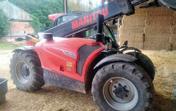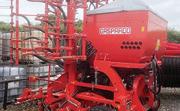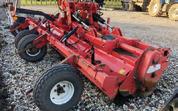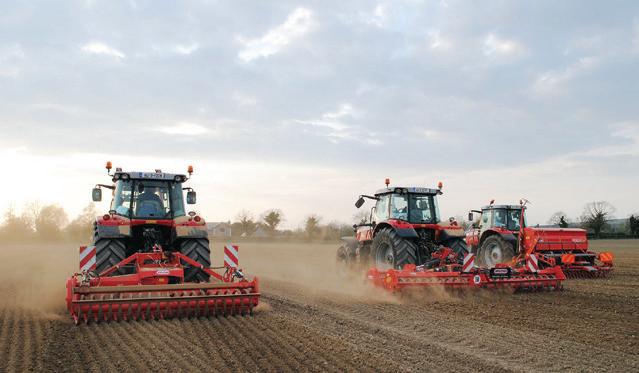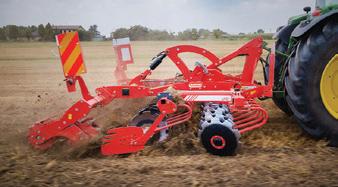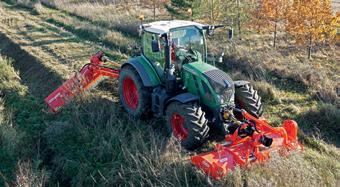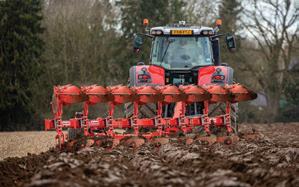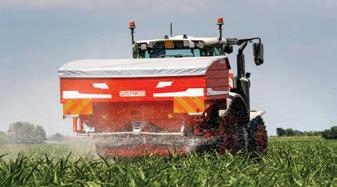Midland Farmer

































































































































EDITORIAL
Editor:
Johann Tasker | T: 07967 634971
E: johann@ruralcity.co.uk
Design:
Mark Shreeve | T: 01502 725839
E: mark.shreeve@micropress.co.uk
Advertisement production:
Polly Coleman | T: 01502 725841
E: polly.coleman@micropress.co.uk
Gemma Mathers | T: 01502 725813
E: gemma.mathers@micropress.co.uk
Callum Hoffman | T: 01502 725840
E: callum.hoffman@micropress.co.uk
ADVERTISING SALES
Danny Lewis | T: 01502 725862
E: danny.lewis@micropress.co.uk
Harvey Taylor | T: 01502 725804
E: harvey.taylor@micropress.co.uk
Lawrence Kenny | T: 01502 725860
E: Lawrence.kenny@micropress.co.uk
Midland Farmer is a controlled circulation magazine published monthly for farmers and growers in the Midlands (Derbyshire, Herefordshire, Leicestershire, Lincolnshire, Northamptonshire, Nottinghamshire, Shropshire, Staffordshire, Warwickshire, West Midlands and Worcestershire) or companies supplying goods and services to the sector. To be included on the circulation list, a farmer must have a minimum of 70 acres of land, or 50 dairy/beef stock, or 50 breeding sows/250 growing stock, or 15,000 laying hens/broiler chickens. Intensive horticulture units are required to have a minimum of two hectares.
If you no longer wish to receive this magazine, please email your name, address and postcode as it appears on the wrapper to gemma.mathers@micropress.co.uk
© Countrywide Publications 2024
Published by Countrywide Publications, Fountain Way, Reydon Business Park, Reydon Suffolk IP18 6DH T: 01502 725800
Printed by Micropress Printers Ltd T: 01502 725800
The start of a new year is usually a time to look forward – a time of hope for a better and brighter future.
In that respect, 2025 begins just like many other years – if not more so in farming terms. But growers and livestock producers will also be well aware that there is a lot of unfinished business which needs dealing with from 2024 too. And it needs to be dealt with urgently.
The biggest issue is, of course, the government’s decision to impose 20% inheritance tax on farming assets worth more than £1m. It is a decision which at best shows how little the government understands the industry - and at worst shows a callous disregard for farming families and livelihoods.
Anger at this family farm tax has seen farmers descend on London no less than three times since the autumn Budget. And the government’s intransigence on this issue suggests we must prepare to dig for the long haul.
The season of goodwill has just ended. Farm leaders behind the London protests insist they will not take no for an answer – and are planning more protests to get their message across.
Then there is the issue of capital grants, which the government postponed overnight just before

Christmas – arguing that it had been overwhelmed by applications and was putting payments on hold with immediate effect.
This is blatently unfair to farmers who have applied in good faith to undertake environmental improvements after being told by Defra they would be paid to do so.
The government says it will make an announcement on capital grants early this year – and we wait with bated breath to see what it contains –but it does nothing to engender confidence in our political leaders.
Still, at least we know where we stand – which is largely on our own and doing our best to produce food and look after the environment while our political leaders seem to think the opposite. At times like these, it would be easy to become despondent. But it is important to look positively to the future, rather than sticking our heads in the sand or harking back to better times long ago. Farming – and farming families – have faced many trials and tribulations over the years and are still here to tell the tale. It will take more than an ignorant government to make us go away.
Johann Tasker, Editor









• Similar profits over next 12 months
• Little increase in cost of key inputs
• More changes due to farm support
Farm profits will remain steady during the coming year – as overall output increases and key inputs look set to stay relatively stable, say experts.
“Overall, profitability is forecast to be little changed in real terms,” says James Webster-Rusk, senior analyst with Andersons farm business con sultants.
Crop output is tentatively forecast to improve, says Mr Webster-Rusk. Dairy is benefitting from increased milk prices and returns for grazing livestock are expected to remain ahead of the long-term average.
“Overall, output is expected to rise in real terms in 2025, however costs are also forecast to increase. Many in puts are predicted to continue rising at or above inflation, including finance, wages and wider services.”

to open in 2025.
But key inputs, such as fertiliser and feed, look set to be relatively stable during the next 12 months, says Mr Webster-Rusk, who examines the prospects for farm profitability during the year ahead in the Andersons Outlook report for the year ahead.
That said, changes announced in the autumn Budget mean deductions to basic payments – now called delinked payments – will be much deeper than many analysts expected.
“Profitability will be little changed
No farm will receive more than £7,200 in direct payments in 2025, This follows Defra confirmation that a 76% reduction will be applied to the first £30,000 of a payment, with no payment made at all above £30,000.
The government has also underlined its commitment to Environmental Land Management with a new
Defra says the CSHT scheme will provide new quarterly payments designed to improve farm cashflows –alongside a rolling application window so farmers can apply throughout the year.
The CSHT will open through an initial controlled roll out to ensure everyone gets the necessary support, says Defra. Frustratingly, though, applications will initially be by invitation only – on a rolling monthly basis.
Defra has also unveiled 14 additional Sustainable Farming Incentive endorsed actions. These will be available from summer 2025 for farmers who make improvements to grassland, heritage and coastal sites.
As part of its New Deal for Farmers, the government says it will set up a new British Infrastructure Council to steer private investment in rural areas including broadband rollout in our rural communities.
“We are also developing a 25-year farming roadmap, focusing on how to make the sector more profitable in the decades to come,” says Defra.
More farmers than expected will be affected by government’s autumn Budget changes to inheritance tax, suggests the latest analysis.
The Central Association of Agricultural Valuers recently suggested that 75,000 farmers could be affected by the decision to impose 20% inheritance tax on farm assets worth more than £1m from April 2026.
But a deeper analysis by CAAV secretary and adviser Jeremy Moody has unveiled another swathe of farmers will also be affected – because the new rules mean all assets must be accounted for at current market value.
This change will have a particular effect on many livestock farms. “Market value would mean a potentially massive uplift over the [widely used] accounting value for a long-standing dairy herd, for example,” says Mr Moody.
“All of this means that yet more money will have to be found to pay the tax, whether by selling more land, more operational business assets, or foregoing more income and investment.
“It’s now clear that even more people will be affected. This hurts the people it claims to protect and protects those it claims to hurt. It is time to drop this tax.”
So we are back at it for another year. 2024 ended with us at the Wychwood Golf Club, not the ideal time to be working on a golf course but unfortunately with the weather and heavy schedule last year that was the earliest we could get them booked in. Just in time as well with storms Bert, Conall and Darragh blowing through.

Even though we had only drained 3 fairways the club were happy with our works as they were still able to play the day after storm Conall had done its worst. Despite the torrential downpour of 3 days they stated on their Facebook page that it was:
“Great to have the full 18 holes open with trolleys back on with the course playing in such conditions ”.
It has been a really good site to work on with a great client to work for. They must be happy with what we are doing as the lads have been spoilt with lunch from their chef everyday!!
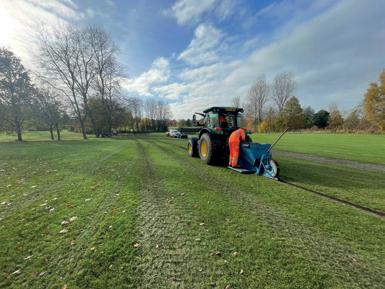

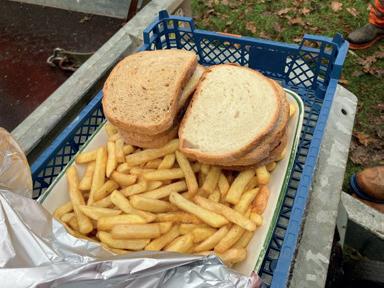
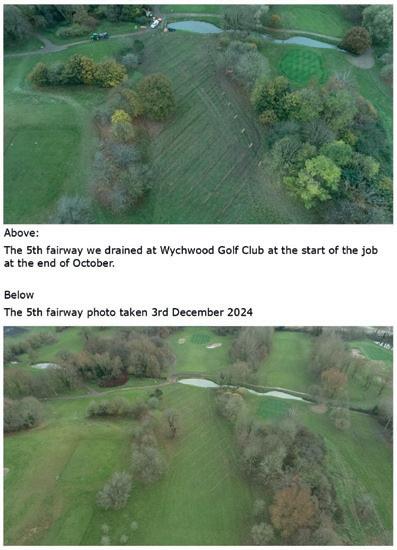



Youngsters are being encouraged to take part in this year’s Big Farmland Bird Count (BFBC) – the annual national census of farmland birds.
Organised by the Game & Wildlife Conservation Trust (GWCT), the bird count provides vital data to help scientists and conservationists understand which species are in trouble and how they can be helped.
The two-week count for 2025 kicks off on Friday, 7 February. The GWCT says it hopes to make this year’s count bigger and better than ever – and is asking for all the family to be involved.
As well as providing snapshot of the bird population on UK farms, the count aims to raise awareness of the role that farmers and other land managers play in the conservation of farmland birds.
“We would love to see more of our younger generation taking part, so if you are a farmer, ranger, game or forester, why not see if you can get some help from your children, grandchildren or younger friends and family.”
To encourage younger bird spotters, the GWCT has have updated its Big Farmland Bird Count website with some easy-to-use guides and count sheets. These are freely available to download.
Farmland birds have declined by 63% since 1970 and need help to reverse the trend. The key to doing this, and increasing biodiversity, are the people who look after the 72% of UK land used for farming.

It is hoped the Big Farmland Bird Count will help reverse the decline in numbers Picture: Will George-GWCT
TV presenter and farmer Adam Henson highlighted the importance of the Big Farmland Bird Count by featuring it on BBC One Countryfile last year. Farmers have the opportunity to be at the forefront of any efforts to restore those populations.
“Nature-friendly farming is the way forward, and to make sure we’re getting it right, providing the best habitats and support for our farmland birds, it is important to keep records.”
Last year’s survey saw 395,000 birds spotted. A total of 140 species were recorded with the most common species seen were starling, woodpigeon and fieldfare.
Some 27 species were red-listed. The most abundant red list species were starling, linnet, fieldfare and lapwing, while the rarest sightings included snow bunting, rock pipit, merlin and greenshank.
GWCT conservationist Roger Draycott says: “The Big Farmland Bird Count is the first and only UK-wide citizen science project to involve land managers in monitoring the state of farmland birds.
“Since the count started in 2014, it has helped us understand how wildlife is doing on our land, and it gives us a national snapshot of the state of nation when it comes to our farmland birds.”
For full details and to take part, visit www.bfbc.org.uk
The New Year is upon us – and ongoing concerns about the impact of the autumn Budget continue to dominate much of our time at the Country Land & Business Association.
During the weeks and months since the Budget announcement, we have received an surge of calls and emails from landowners, farmers and rural families all asking for advice and support.
Inheritance tax changes, the increase in national insurance contributions and the proposal to accelerate the reduction of delinked payments all are taking their toll on farmers and rural business owners.
Some 58% of people oppose the proposed increase in inheritance tax, while less than one quarter support it, according to a recent CLA / Survation poll of more than 1,000 adults across England’s 100 most rural constituencies.
Even among Labour voters in rural areas, 44% are against the rise, compared to 37% who are in favour.
Farming has always been a high-pressure industry, with fluctuating market prices, unpredictable weather and intense physical demands – all of which can have a negative impact on farmers’ mental health, especially in the aftermath of the Budget.
This is a difficult time for many people. I want to take this opportunity to reassure you that we – alongside many other organisations – are working hard behind the scenes to help protect your rural business.
With a long winter and these additional worries, please feel free to call your local CLA office on 01785 337010 for advice.






Sophie Dwerryhouse CLA Midlands regional director


Want to know who you can talk to?
Farming Community Network fcn.org.uk
Addington Fund www.addingtonfund.org.uk
Royal Agricultural Benevolent Institution rabi.org.uk
Diversify into holiday letting and earn, on average, an additional £35,000 a year. Sykes Holiday Cottages are here to help and will support you every step of the way.
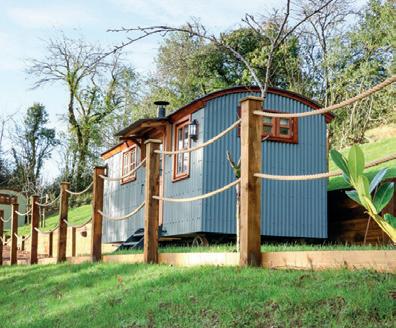



Scan the QR code or visit www.sykes.io/future to download your information pack and get started. Or call 01244 617977 to speak to our letting agents and see how much you can earn.































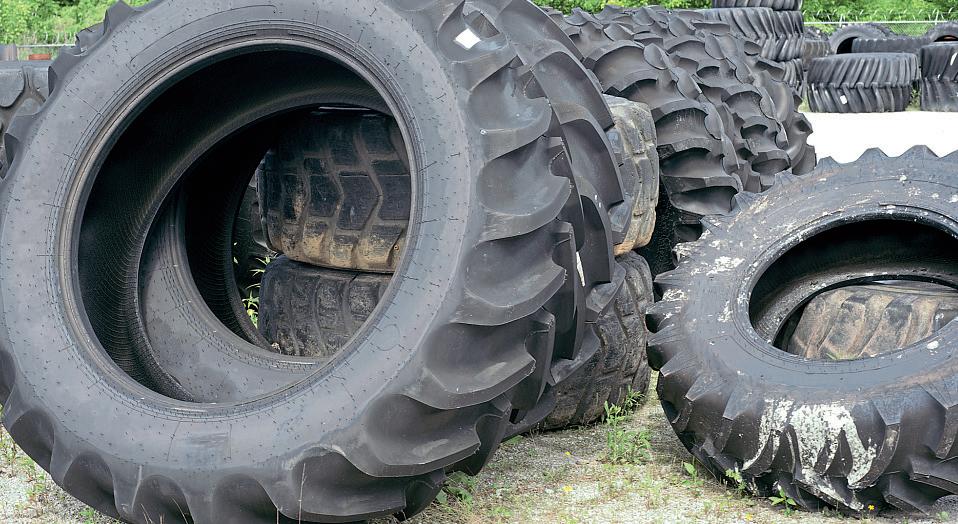

































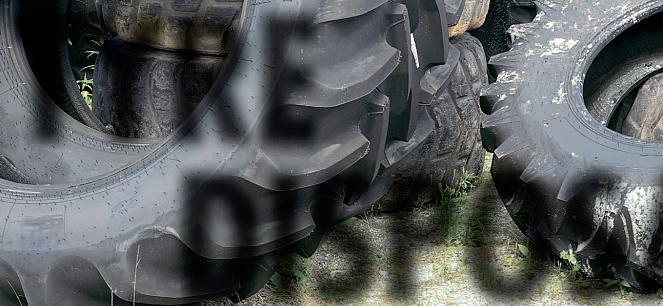
















All of the solar powered water pumps are made to order and come in a range of materials to suit your individual needs. The pumps can also be made in many sizes, ranging from 100 Watt to 400 Watt.
• Farmer friendly
• Cost e ective
• Sustainable
• 12 month’s warranty on all parts
• Made in Scotland
• Aluminium boxes and framed solar panels
• Recycled plastic pallets and back doors
• Pressure vessel
• Pressure gauge
• Integrated pressure switch
• Self-priming pumps
• Pump to a maximum vertical lift of 100m across 1000m or more
• Maximum open flow 6 gal per min
• Maximum of 7,000 ltr per da 07712 397862 | ardo.water@btinternet.com





• Latest winter wheats and barleys
• Influx of good genetics to the fore
• Strong agronomics from breeders
Abumper crop of new cereal varieties has been added to the AHDB’s Recommended List for 2025/26.
In total, 10 new winter wheats and 14 new winter barleys make their list debut – although 26 cereal and oilseed rape varieties have been removed after falling out of favour.
In-built traits
Eye-catching additions include a new UKFM Group 1 winter wheat variety for the second year running – and two new high-yielding UKFM Group 3 winter wheats hoping to revive the fortunes of this market segment.
The new lists also see an influx of varieties with a specific recommendation for resistance or tolerance to barley yellow dwarf virus (BYDV) – including five new winter barleys and one new winter wheat.
Disease resistance
The spring barley list includes net blotch resistance ratings for the first time. Meanwhile, most new winter oilseed rapes have regional recommendations, reflecting the greater regional variation in performance in this crop compared to cereals.
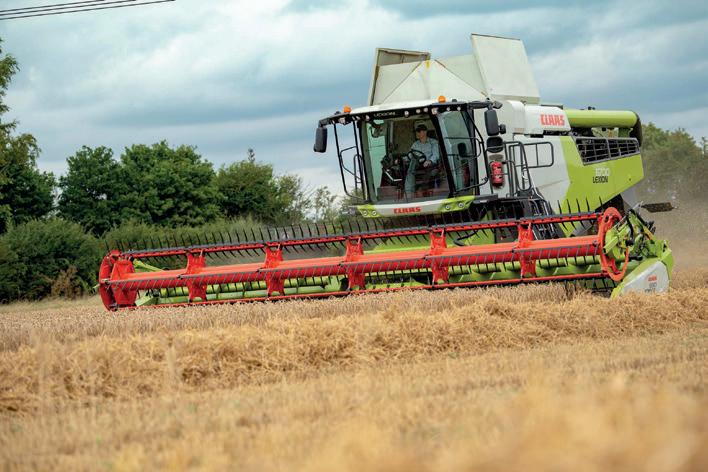
AHDB recommended list manager Paul Gosling said: “Farmers want robust varieties that help de-risk their businesses. Breeders work hard to deliver varieties to satisfy this demand.
“The lists now feature varieties that deliver more diverse and stronger genetics. It is no longer about dirty, barn-filling varieties dominating the lists: it is about providing choice that meets the needs of diverse users.”
Plant breeder KWS has eight new wheats and four new barleys on the list. They include KWS Vibe – listed as a provisional Group 1 wheat variety. Its status is expected to be confirmed this spring after UKFM has completed its harvest 2024 grain analysis.
UKFM Group 2 sees five additions, with various strengths and weaknesses to suit different situations. They include RGT Goldfinch from RAGT which offers a robust disease package, including BYDV and orange wheat blossom midge resistance.
Goldfinch shows good baking quality. Despite relatively low yields, the AHDB says it is likely to appeal to many growers, especially those interested in lower-input systems.
Good yields are still important – but so too are other traits
Below: AHDB list manager Paul Gosling
Fourteen new winter barleys have been added to the list – including seven new two-row feed varieties and two six-row varieties, alongside a number of varieties with built-in traits against barley yellow dwarf virus.
Two-row feed varieties include KWS Valencis and Senova’s NOS Olena, which both offer very high yields with good disease resistance. Also from Senova, Kitty is slightly lower yielding but has resistance to barley yellow mosaic virus Strain 2.
Six row varieties include KWS Inys, which is very high yielding, especially in the East and West regions. SY Quantock from Syngenta offers a very high yield in the North and West regions. Both have good lodging resistance and grain quality.
It’s about providing choice
Most new varieties on the winter oilseed rape list have regional recommendations with just one addition – LG Adapt – having high treated yields and robust disease resistance across the whole UK.
The UK list also includes two new varieties with a specific recommendation for resistance to common clubroot strains.
Those varieties are Crusoe , from plant breeder NPZU; and Cromputer, which is from DSV.
For the East/West region, three new nonspecialist hybrid varieties are recommended. Maverick (from NPZU) is very high yielding. It also has good disease resistance – rated 9 for stem canker – but it lacks pod shatter resistance. Hinsta, from KWS; and Magelan1, from Limagrain; are slightly lower yielding. Apart from a stem canker rating of 5, these two varieties have good pest and disease resistance.
The full lists are available on the AHDB website, with printed copies available from this month.




Eight new wheat varieties and four new barleys from KWS have won a place on the Recommended List for 2025/26.
Covering all groups and sectors, many of the varieties set new standards for yield, quality and consistency of production, says KWS head of product management Kate Cobbold.
The arrival of the new genetics redefines the potential of varieties within the traditional Group system with many of the additions introducing new levels of dual purpose versatility.
“Seven out of the ten winter wheat additions on the new RL are KWS varieties, with the number of top spots achieved reflecting our continuing focus on breeding varieties with the highest productivity for growers.”
KWS says it remains focused on delivering the highest yield and endproduct marketability to maximise revenue for growers. But the company is also building in the best agronomic properties and disease resistance traits into its varieties.
“Achieving this has meant combining a wide range of genetic diversity, bringing together the best of UK, German and French parentage to give them real world resilience and durability,” says Ms Cobbold.
“Our new varieties stand alongside proven market leaders like Extase, Dawsum and Tardis as a new generation of varieties focused on helping producers meet the challenges of the future from both economic and growing perspectives.”

“Its yield of 98% of controls combined with a milling specification protein content of 13.2% sets it apart from its competitors, as does the most comprehensive agronomic package of all the key Group 1 players.
“This includes an 8 for yellow rust, a 6 for brown rust and a 6.6 for septoria tritici resistance combined with a Hagberg falling number of 283 and specific weight of 79.1 kg/hl. It really has everything you would wish to see in a Group 1.”
With three new KWS varieties entering Group 2 taking the first three spots for outright yield, Ms Bacon says the sector is changing, particularly in light of the renewed appeal of Group 1 as a result of KWS Vibe.
“KWS Extase set a new standard for septoria resistance and untreated yield when it was introduced five years ago and many growers started choosing it for this reason, rather than its milling potential.”
New Group 2 additions KWS Arnie, KWS Equipe and KWS Newbie build on this position by adding improved disease resistance and higher yields combined with the same excellent milling potential.
“In addition to their strong trait sets, this makes them a valuable agronomic tool across a range of different production scenarios which altogether makes them a powerful addition to
“Like Group 2, Group 3 is also evolving with these new genetics providing a range of opportunities for growers that would not have been possible just a few years ago.
“KWS Solitaire – the top Group 3 variety on the new list with a yield 107% of controls –brings exciting possibilities to all regions. Additional benefits include outstanding septoria tritici resistance for the West and OWBM resistance for the East.
“KWS Flute is also a good Group 3 all-rounder with a yield 106% of controls for the UK generally, rising to [108%] for the North region. It also has good distilling potential for northern growers with good early sowing performance too.”
In Group 4, where KWS Dawsum’s reliability and all-round strength have made it the UK’s most popular wheat by area grown in recent years, KWS Scope tops the list with a yield of 108% of control for the UK as a whole, says Ms Bacon.
“That rises to 111% in the West region so it’s a true yield monster with the type of agronomic foundation that allows this performance to be delivered across the country plus it has a specific weight significantly higher than the next highest yielder on the list.”





New Group 1 wheat KWS Vibe slots into the new list behind KWS Zyatt for yield. But it has the overall highest protein production potential on the list, says KWS conventional crop manager Olivia Bacon.



“We believe KWS Vibe is the new ‘protein banker’ for the UK with the best combination of yield and protein of all varieties, but with a much better package for growers than previous varieties.




All markets covered
Turning to Group 3, new additions
KWS Solitaire and KWS Flute can also be seen as Group ‘disrupters’ with their potential to serve all market opportunities be they distilling, export, feed or biscuits, says Ms Bacon.







A 7 for yellow rust, a 6 for brown rust and a 6.5 for Septoria tritici resistance give KWS Scope similar agronomics to KWS Dawsum with its specific weight of 78.9 kg/hl right up there too.
New spring wheat Group 2 KWS Bezique brings yield and strong disease resistance to the Group 2 sector, she adds. KWS Bezique is a good partner on-farm to KWS Alicium and a natural progression for those growing KWS Cochise.


ANTLER performed exceptionally in APHA variety list testing in the past 3 tough years. In 2024, extensive farm trials recorded consistent and exceptional yields!
With excellent seed quality and establishment, low bolting and a good disease package, this is the top variety for sugar beet growers.
With our proprietary priming and pelleting plus a wide range of seed treatments ANTLER really is the new Monarch of the Fen!
All seed is now sold directly from SESVANDERHAVE, or our partner AF Group






• Choice across major crop types
• Strong pipeline of new varieties
• Balance of key traits and yields
An expansive new variety lineup demonstrates the strength and depth in Elsoms Seeds breeding programme, says the company.
Seven new Elsoms varieties on the Recommended List for 2025/26 include three winter barleys, a spring wheat, an oilseed rape, a hybrid rye –and the list’s highest yielding spring oat variety.
“Beyond the ‘magnificent seven’ newcomers, what’s most pleasing is the wide choice of competitive varieties we now offer UK farmers across all the major crop types,” says Elsoms head of agriculture Toby Reich.
Winter barley varieties available for drilling in autumn 2025 include SU Arion – a variety offering novel genetics and a robust disease package including 6.3 for Rhyncosporium, 7 for net blotch and 8 for mildew.
With regional recommendations supported by yields of 105 in the East and 107% in the North, Mr Reich says Arion offers a balance of positive traits including a big, bold grain. “We’re confident of its future success,” he adds.
“KWS Bezique has better yellow rust and Septoria tritici resistance than the most popular spring wheat varieties and also has a higher Hagberg falling number than many others.”
Growers have some strong varieties to choose from, says Toby Reich
“Also recommended for the North, winter barley Rosemary is well suited to early drillin, says Mr Reich. “With a treated yield of 106%, it looks a step ahead of its competitor.”
Six-row winter barley Sixy completes the Elsoms line-up. It has Barley Yellows Dwarf Virus (BYDV) tolerance and a full UK recommendation. Mr Reich says it will be a strong addition in what looks to be a competitive new winter barley line-up.
Turning to spring wheat, Elsoms says it has found another new variety with great potential in Ophelia. It has excellent grain quality and offers a high specific weight of 80.3kg/hl.
“Early maturing and offering good
early vigour with very stiff straw, Ophelia responds well to high seed rates and a split fertiliser application strategy.
Elsoms secured another regional recommendation with Powerhouse oilseed rape – the highest yielding conventional variety for use in the North. Its solid set of disease scores includes 7 for light leaf spot resistance.
Elsoms oilseed rape breeder Mark Nightingale says: “Powerhouse is a big variety that offers conven-tional growers the lowest relative risk for the North, very strong disease resistance and high seed yields."
With Caledon, Elsoms now also offer growers the highest yielding spring oats variety on the new list.

KWS UK technical manager for hybrid crops Rory Hannam, says the company’s first hybrid barley Inys – which tops the list for winter barley with a yield of 109% – puts the company in a unique position.
“This allows KWS to offer a full portfolio of barley options for all growing situations and market opportunities,” he explains.
“Although hybrids have been a key feature of KWS breeding for many years across crops such as sugar beet, maize, rye and more recently oilseed rape, Inys is our first hybrid barley to be launched, with the UK the first region to introduce it.
“That yield is going to make it very popular with growers, but Inys is a great performer in the field with good standing power and a solid ag ronomic package. Its 7% for brack ling, for example, is the lowest of all hybrid barleys and also one of the low est on the list.
“There is without doubt a place for both conventional and hybrid barley varieties on farm. Depending on the end market and local growing condi tions, farmers now have options for finding the most appropriate barley.”
KWS Tardis has been the UK’s most popular winter barley for several years and now new KWS Valencis looks like being its natural successor continuing the tradition of high yielding conventional options.
With a treated yield of 105%, 4% ahead of the next best variety, plus the highest untreated yield at 98%, Caledon offers outstanding disease resistance and a positive balance of agronomic features.
Early ripening plus an impressive kernel content make it highly suitable for milling, says Mr Reich. “It it looks a variety to follow.
“On the new AHDB Descriptive List for hybrid rye, SU Thor was the highest yielding new variety with a treated yield of 108%.
“It is dual-purpose – grown for both grain and biogas – and looks to be the ‘go-to’ hybrid rye for those growers going for out and out yield.”
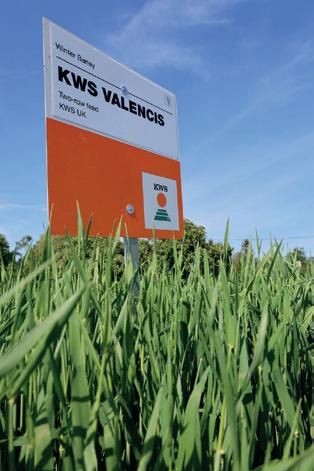
“The highest yielding conventional variety on the new RL with a yield of
106%, KWS Valencis has shown consistent performance across the country and over the last three years with particularly good grain characteris-
“It performs particularly well on light soils and its untreated yield of 91% of controls gives it real versatility in a number of production systems. Even in the challenging year of 2024, KWS Valencis’ strong untreated yield and low brackling held up.”
KWS Enduris is a new potential dual purpose Spring malting barley added to the new RL and currently under macros scale testing for malting recommendation after 2025.
KWS Enduris has a short and stiff plant type with good performance in brewing trials and autumn sowing potential. “It’s one we have high hopes for,” says Ms Bacon.






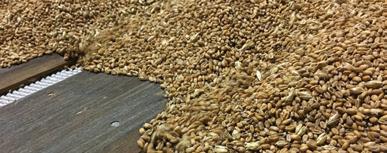




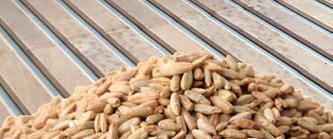



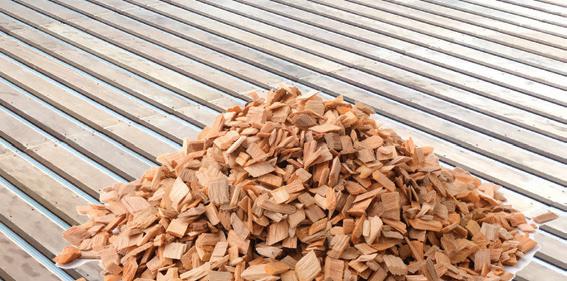




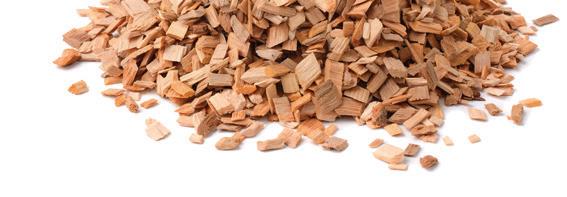


Two new Limagrain pulses added to the 2024/25 PGRO Descriptive List demonstrate a continuing commitment to the UK sector, says the breeder.
Yielding 110% of control, LG Eagle is the joint highest performing spring bean variety on the list. It is joined by early maturing combining pea LG Corvet – a relatively short variety yielding 111% of control.
Limagrain Field Seeds says LG Eagle has delivered consistently in trials over recent seasons which have been both different and challenging. But the variety has other valuable agronomic characteristic too.
“Consistent performance is an important attribute for a spring bean – and one that growers look for on farm,” says Limagrain UK cereals and pulses product manager Heather Oldfield. “But it’s not just about high yields.”
LG Eagle is also one of the earliest varieties on the list to mature. It stands well – but isn’t too tall – and offers a good disease package too. It is suitable for human consumption, fish feed and animal protein markets.
With limited seed availability for 2025, Heather believes LG Eagle’s consistent yields and disease resistance package mean it will be taking a big bite into the spring bean acreage by 2026.
Yield protection
Combining pea LG Corvet also has a very good standing ability, which is an important attribute for ease of harvesting, while protecting precious yield. Poor standing ability can often be barrier to growing peas,” says Ms Oldfield.
“LG Corvet offers an exceptional downey mildew resistance rating of 8 – the result of a concerted focus from Limagrain on breeding for resistance against this devastating disease in peas,” she notes.
The variety holds one of the highest dry protein percentages at 22.2%.
Heather Oldfield: Good varieties have the full package
Below: joint highest performing spring bean variety


An increase in demand for pulses is encouraging breeders to introduce and enhance varietal traits using the latest techniques. routine diagnostic marker assisted selection.
Limagrain is harnessing the benefits of routine diagnostic trait selection – which allows the breeder to undertake rapid generation cycling. New varieties are then put into schemes for
Target traits sought for peas include reliable yields with consistently high protein levels, resistance to lodging, and tolerance and resistance to diseases, the results of which we are see-
“Cold tolerance without
high quality, stable varieties – and determine optimum drill timings.
varieties fit for future purpose for



Two Syngenta malting barley varieties have been fully approved by the Malting Barley Committee for harvest 2025.
Spring barley variety SY Tennyson has secured full approval for brewing, having previously been provisional-

Described as the next generation of malted barley, SY Tennyson offers a treated yield of 101.5% of control and good agronomics. It has a specif ic weight of 66.5kg/hl and 1.44% ni trogen content.
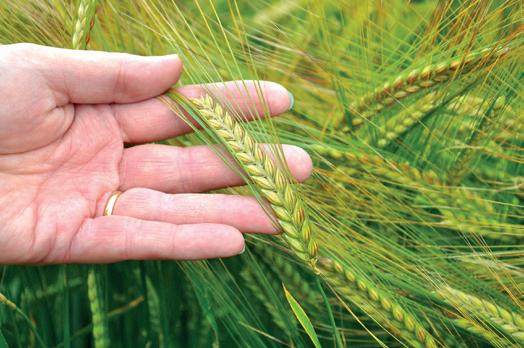
Meanwhile, SY Vessel has secured special use full approval for malt distilling – making it the only winter variety on the MBC list with this accreditation. Traditionally, spring varieties have been used for malt distilling.
Syngenta says SY Vessel has now broken the dependency on the spring crop as the sole source of grain for malt distilling, with competitive yields on-farm and high grain nitrogen contracts available from certain maltsters.
Syngenta seeds marketing manager Kathryn Hamlen says both promotions are great news for malting barley growers. Having a winter variety
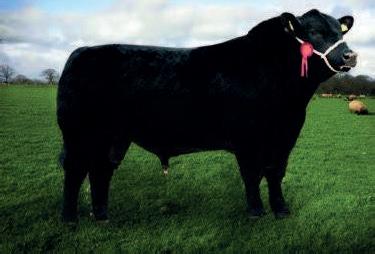
Ready to work - Semen Tested, delivered direct to your farm, very quiet, easy calving. Also females available.
Health monitored, closed herd, full pedigree with each animal, Red tractor.
Semen Available. Telephone: 077157 64351
malt distilling: SY Vessel
Left: Fully approved for brewing and malting: SY Tennyson
as another option helps growers and end users to manage risk, she adds.
UK maltsters are expected to buy around 1.9 million tonnes of malting barley from the 2024 crop. Barleys are given provisional approval when maltsters believe they have malting potential – with a final decision made after a further season.
Farmers are advised to check whether their grain buyer wants a particular variety before growing it. But Ms Hamlen says growers should now have extra confidence to include SY Tennyson and SY Vessel among the varieties they consider.




















































































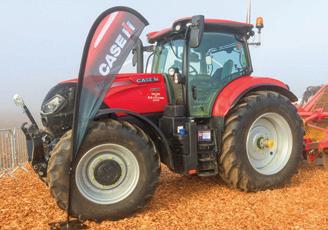
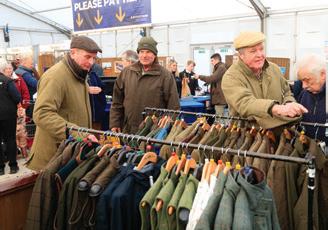






















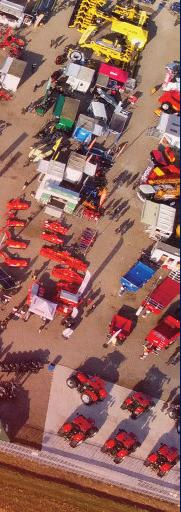


















Mammoth Millet - the perfect solution for failed crops of rape.
G.R. BOURNE
G.R. BOURNE
New Cut
DITCHING & DRAINAGE CONTRACTOR
DITCHING & DRAINAGE CONTRACTOR
New cut ditching • Deepening
New Cut Ditching / Deepening and Re-Profiling Banks / Mudding
Ditching / Deepening and Re-Profiling Banks / Mudding
360 Excavators 8-20 tonne + 15m Long Reach Reed Cutting Buckets & Tree Shears Spilsby, Lincolnshire Tel: 07961538107 or 01754890683 Email glynnbourne@btinternet.com
• Re-profiling banks • Mudding
Reed cutting buckets and tree shears
360 excavators 8-20 tonne + 15m long reach
360 Excavators 8-20 tonne + 15m Long Reach Reed Cutting Buckets & Tree Shears Spilsby, Lincolnshire Tel: 07961538107 or 01754890683 Email glynnbourne@btinternet.com
OSR Growers know the frustration and difficulty of realising late in the spring, that a crop of OSR isn’t going to be viable. This creates the dilemma of what to do - especially if the ground has been sprayed with autumn herbicides.






07961 538107 or 01754 890683
Lincolnshire

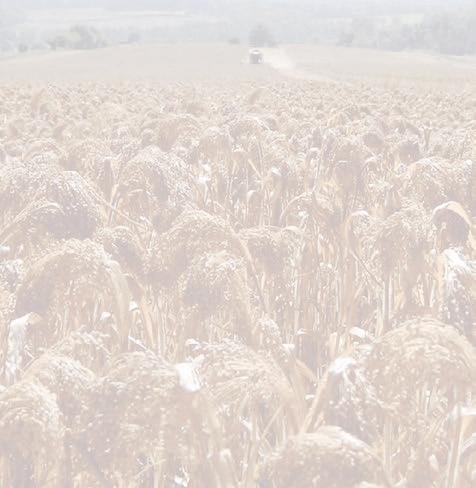
Mammoth Millet is not sown until early May, and can be direct drilled or sown after failed rape with minimal cultivations. Furthermore, the Millet now arguably offers as good or better a gross margin than OSR anyway - thus putting things back on track.
margins over £950 per Ha.
Mammoth is a cheap,- simple and easy crop to grow and we are seeking new growers for 2025.




Drainage
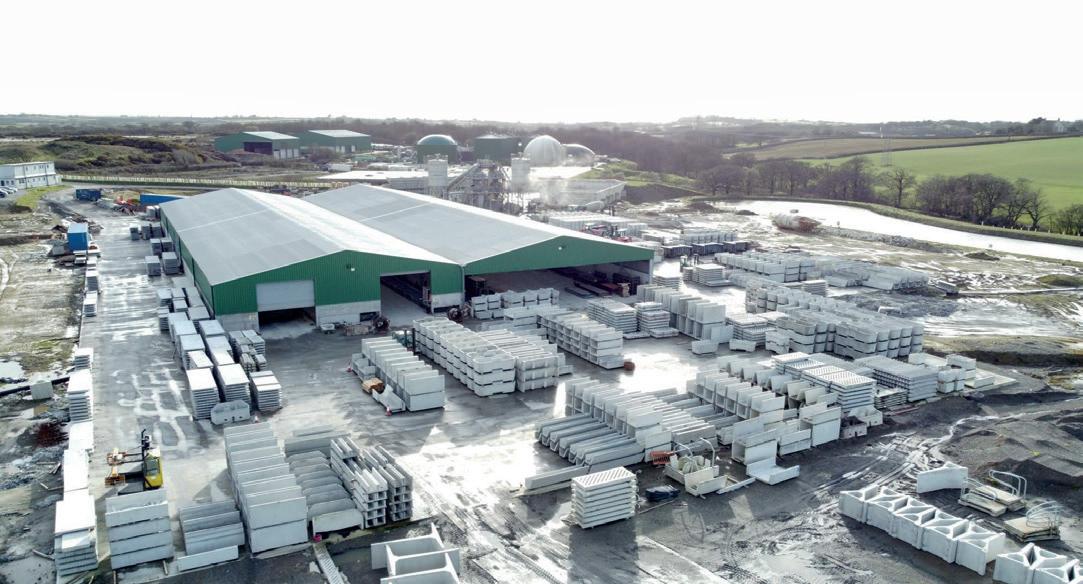

Two wheats from breeder RAGT make the 2025/26 Recommended List after strong performances on farms and in trials.
Breadmaking wheat RGT Goldfinch is the first Group 2 breadmaking wheat resistant to barley yellow dwarf virus and orange wheat blossom midge. It is joined by RGT Hexton – a barn-filling Group 4 soft wheat.
Goldfinch is the latest wheat variety from RAGT’s Genserus breeding programme, which provides season-long protection against BYDV.
“Using genetics rather than insecticide to prevent BYDV infection greatly simplifies crop management,” explains RAGT arable technical manager Andrew Creasy.
“It removes the need to monitor and control aphid vectors for less than the cost of buying and applying a single pyrethroid spray," adds Mr Creasy. This is good news economically and environmentally, he says.
Additional resistance to orange wheat blossom midge means RGT Goldfinch growers can apply with confidence for the £45/ha payment from Defra's Sustainable Farming Incentive for growing an arable crop without insecticide.
“The variety has good protein con-
RGT Hexton
Barn-filling Group 4 soft wheat RGT Hexton has a good disease resistance package, making it a strong contender on farm next autumn as growers look to replace older varieties coming under increasing pressure.
Hexton is the highest yielding Group 4 soft approved for distilling, with a UK yield of 105 and an exceptional 111 in the northern region.
“RGT Hexton’s output has been consistent wherever it is grown,” says Mr Creasy. “It produces the goods as a first or second wheat on light or heavy land and can be sown from the last week of September onwards.
“Growers don’t have to worry about pushing harvest back too much, as it is a medium-maturing type with short stiff straw and a decent specif ic weight, providing useful insurance if harvest is delayed.”
RGT Hexton has good resistance against Septoria tritici and yellow rust (both scored at 7), with a 6 for mildew and 5 for brown rust.
It is also resistant to orange wheat blossom midge, a prerequisite for the increasing number of growers turning away from insecticides.
“We think RGT Hexton will have widespread appeal across the UK. The variety has no Achilles heel, and the combination of an exceptional yield

A variety with a very strong disease profile
Clean, consistent, and sustainable sample Group 2 wheat resistant to BYDV and OWBM
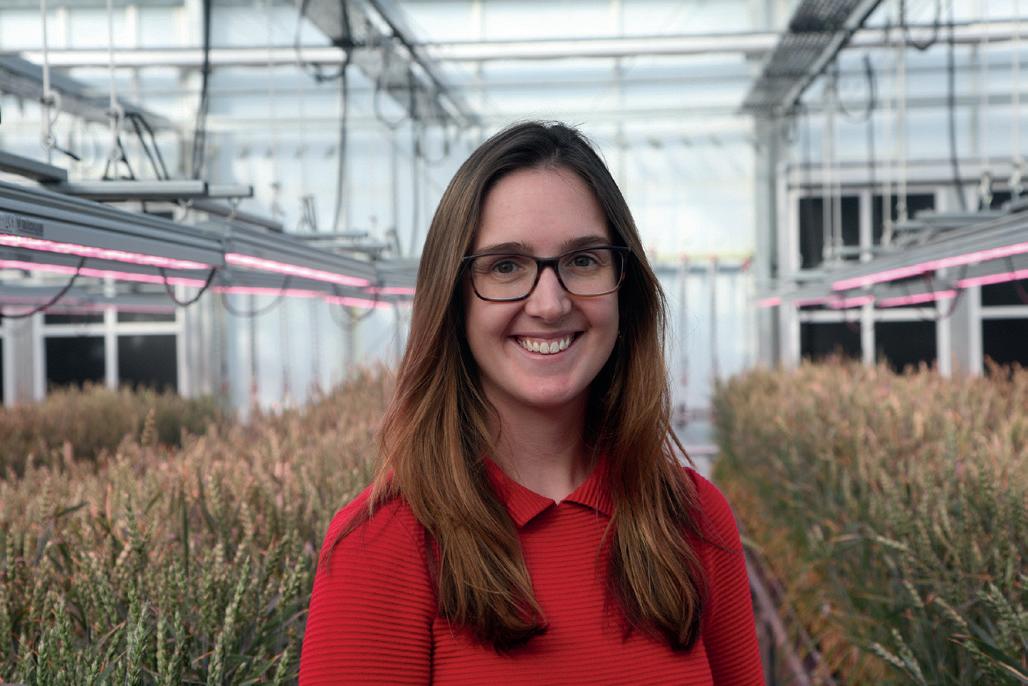

Plant breeder RAGT UK has promoted business leader Helen as the company’s managing director – bringing a
Ms Wilson joined RAGT UK in 2013 as a product development specialist, managing the grass, maize and soil health plants portfolios. She was then appointed head of forage crops in 2016, covering the UK and Nordic and Baltic regions.
For the past three years Ms Wilson has worked for RAGT Group’s as a business leader for Asia and Oceania, integrating New Zealand and Australian subsidiaries into the group and exploring new opportunities in south-east Asia.
RAGT northern Europe commercial director Simon Howell said:
“Under Helen’s guidance, RAGT UK will continue to develop its highly successful multi-species portfolio. We are confident her appointment will secure a strong future for the business.”
Ms Wilson said: “I am thrilled to have been given the opportunity to lead RAGT UK. The skills and experiences I have gained from my international role within the wider group



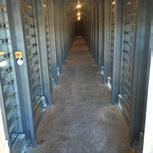













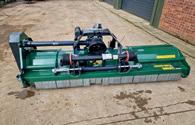

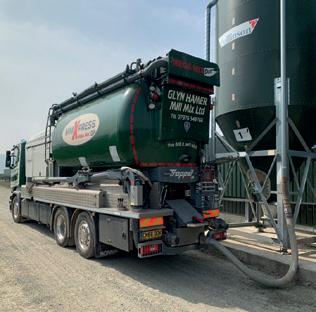



With numerous suction and discharge options including directly into feed bins or separate bunkers, we are able to provide an efficient, traceable and consistently high standard of service for our customers.
Based in the West Midlands we run a fleet of modern ‘Tropper’ machines specifically built for precise mixing and











• Full malting status for winter barley
• Strong yields and disease resistance
• ‘Serious interest’ for barley growers
High-yielding winter barley
Buccaneer has achieved full malting status for brewing.
The two-row variety from Elsoms Seeds was approved at the Malting Barley Committee’s autumn meeting on 4 November. With a treated yield of 99%, it is the highest yielding two-row winter malting variety on the 2024/25 recommended list.
Bucanneer’s full approval status offers winter barley growers more varietal choice as they look to autumn 2025 drilling, says Jonathan Arnold, joint managing director at independent grain merchant Robin Appel.
“Buccaneer’s arrival is definitely timely, given that the industry has been crying out for a higher yielding winter malting barley. We’ve been tracking it through the trials system and it has all the credentials to become an established malting variety.”
Making the switch
Recent years have seen a noticeable lack of new winter malting barley varieties coming on to the recommended list. With historically lower yields and low premiums, some growers have switched to hybrid and higher yielding feed barley varieties.
But Mr Arnold says Buccaneer could help to reverse that trend – especially if good contracts and premi-
Laura Jones, malting barley trader at Saxon Agriculture, agrees that Buccaneer has the potential to spark an increase in the winter barley area. Less of the crop has been sown following challenging autumn establishment conditions, she points out.
Business ethos
Saxon Agriculture has a strong business ethos in supporting promising new varieties coming through the system, says Ms Jones. For growers, Buccanner is a definite step forward on yield, she explains.
“When it became likely that Buccaneer would go onto the recommended list in 2023, we made a strategic decision to place a significant area of the crop in the ground for crop 2024 demonstrating our confidence and belief in the variety.”
As well as performing well in terms of yield, Buccanneer has shown strong resistance to both brown rust and rhynchosporium with low brackling.
Strong contender
“With good contracts available, I believe it will not only take market share away from other winter malting barleys, but also sway growers who had defected over to feed or hybrid barleys,” says Ms Jones.
“Another strong winter malting

Two-row- winter malting barley Buccaneer has a 99% untreated yield.
Right: Market share is up for grabs, believes Laura Jones
“It’s a definite step forward
Buccaneer has all the right credentials, says Jonathan Arnold




growers and brewers more choice – and that’s important for a sector that was starting to look exposed when dominated by one variety.
“Although the cropping area for winter malting barley is comparatively small at the moment, there is certainly scope to produce more winter barley for general brewing production in the UK and for specialist export markets.”
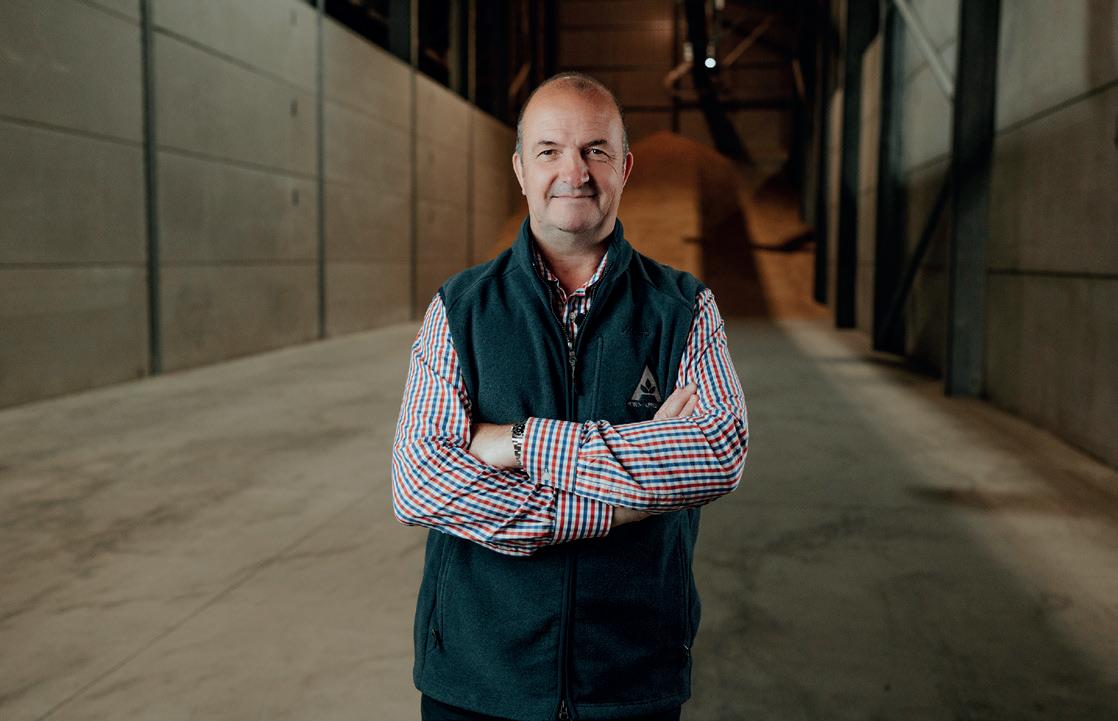
Buccaneer also offers low screenings and good specific weights making it popular with maltsters based on its suitability for producing roasted malts for craft beers, a growth sector
“While it sits nicely besides spring malting barley for general brewing production, winter malting barley is also becoming increasingly more important for producing speciality ex-
“Ultimately, growers need strong varieties supported by contracts with good premiums to incentivise them. In Buccaneer, they have an exceptional winter malting barley with no obvi-
Awet autumn meant spring barley was a get-out-of-jail card for some growers last season. But many crops still delivered above average yields.
Their performance owes much to the ageold issue of tiller retention, says Limagrain arable technical manager Ron Granger.
Pictured below, Mr Granger outlines six ways to get the most from spring barley this coming season.
Depending on the locality and the opportunities for selling to different end users or export markets, the barley crop you grow and the agronomic inputs required will be determined by the sector you target.
End user requirements will influence many agronomic decisions, particularly nitrogen strategy. This makes it essential growers are clear about the quality criteria that must be met.
This is particularly true for those dependent on hitting a certain grain nitrogen percentage to achieve the contract premium, notably distilling, which requires 1.65% N or lower, brewing 1.65-1.85%, and grain distilling at 1.85%+. Grain nitrogen, generally, is not a concern for animal feed.

dow of opportunity.
Limagrain trials show earlier drilling in spring can improve yield potential, however, this is mainly only possible on lighter, more free-draining land, that will dry and warm quicker than a heavier soil type.
In many instances, variety choice is determined by the end user or contract chosen.
However, for those still to decide what to grow, consider one of the proven, dual use varieties, such as LG Diablo, which has good yield performance, with several end market opportunities.

Early drilling will significantly increase disease risk, so consider more disease resistant varieties for this situation.
Weeds compromise crop establishment and tillering capacity, so drill into good conditions, and control early weed growth with effective chemistry sets that don’t knock ear-
350 seeds/m² and most (76%) targeting a yield of 8t/ha.
Limagrain trials comparing variety seed rates over various seasons and regions suggest that with more vigorous, higher tillering varieties, such as LG Diablo, the optimum seed rate is 350 seeds/m² when drilling into ideal conditions around mid-March.
This should be adjusted up or down depending on the weather, seedbed quality, moisture availability, drilling date, and the grower’s own experience on each site.




Choosing a variety with greater tillering ability drives yield, and having more tillers helps crops compensate for tiller loss should stressful conditions arise.





Barley must go into a good seedbed with warming soils and temperatures to germinate and establish quickly, with continued plant growth, so pa-



For high yield potential, aim for a final tiller count of 775-800/ m², and work back from this to calculate seed rate, varying according to soil type, drilling date, seedbed conditions, weather.


A survey of more than 100 growers by Limagrain in 2022 showed half (49%) of growers




A lower rate of 300-325 seeds/m² could suffice if drilling into an “onion bed” in March. But when forced to drill into April due to weather or agronomic reasons – such as black-grass control – pushing up rates to 400-450 seeds/m² may be more appropriate.
This will achieve the optimum final ear number and a competitive crop in a blackgrass situation.
5. Maintain tiller number
Once crops are established, the best way to achieve high spring barley yield potential is to ensure high final ear counts. The AHDB















































Farmers looking to grow spring malting barley successfully in 2025 should manage risk by considering varieties that have performed consistently over multiple years.
This should include difficult growing seasons – such as 2024, says Syngenta seeds technical expert Robert Jackson. Growers should also be sure that there is clear end-market demand for any chosen variety, he adds.
“Spring barley is a crop that can be very sensitive to its growing environ ment,” says Mr Jackson.
“A variety with a track record of good performance across different sea sons is useful.”
The 2024 season provided a nota bly tough test. “Similarly, you need to be able to sell what you’ve grown. So good end market demand for the vari ety from maltsters is crucial.”
Laureate was first added to the AHDB Recommended List in 2016. It has since become the most purchased spring malting barley variety, ac counting for over 60% of the spring barley malting area in 2023.
This is the most recent year of avail able data, says Mr Jackson. “There are
numerous spring malting barley varieties to choose from, but it is certainly one with a strong track record is Laureate.
Despite the challenging season, Laureate’s average treated yield in AHDB recommended list trials during 2024 was higher than the five-year average, says Mr Jackson.
“The same pattern was also seen
Spring barley can be sensitive to its environment, says Robert Jackson.
Laureate was added to the

barley growth guide suggests final target ear population should be about 775 ears/m².
An 8-9t/ha crop needs around 800 ears/ m², which equates to 350 seeds/m² to achieve 2.5-3 tillers per plant at harvest.
In some seasons, prolonged dry periods can cause crops to drop tillers and reduce yield potential. But last year, plentiful moisture availability throughout the growing season benefitted many spring crops, especially on lighter land. We cannot control the weather, but laying strong foundations at establishment will help crops produce and retain as many tillers as possible.
6.
Balanced macro and micro nutrition improves rooting and canopy development, which benefits tiller survival. Apply most nutrition early, either to the seedbed or soon after drilling.
Spring barley has often been seen as a lower input crop, with growers reluctant to increase nitrogen application rates for fear of
exceeding maltsters grain nitrogen limits. But don’t be afraid to push new, higher tillering varieties with more nitrogen.
Higher yielding varieties respond positively to higher nitrogen inputs, due to their increased yield potential and dilution of grain nitrogen content.
In our trials, an extra 30kg/ha of nitrogen applied in the second split generated 0.5-1t/ ha extra yield in some varieties, with crops still achieving low grain nitrogen.
Alongside nitrogen, optimising other macronutrients – such as phosphate, potash, magnesium and sulphur – has benefited tiller retention and final yield.
Tissue analysis of the young growing crop can help identify any shortfalls in nutrition before visible symptoms appear and is a relatively inexpensive way of targeting a high yielding crop.
Additional micronutrients, such as manganese, zinc, copper, iron, and boron, applied at the stem extension phase into flowering, are also useful, ensuring a healthy crop and good ear fertility – while also helping to secure high grain numbers and maximum yield potential.
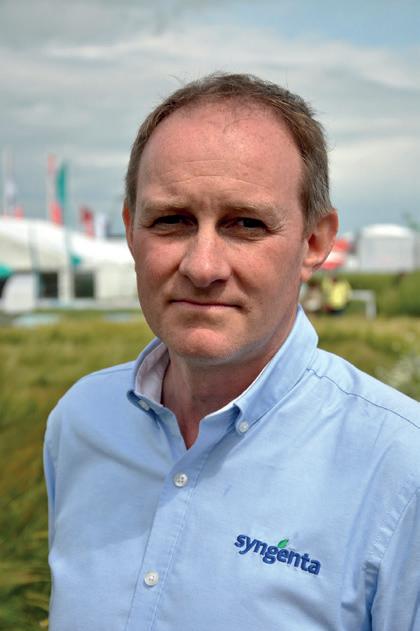
during the wet 2024 season – an attribute that has seen its popularity rise elsewhere in Europe too.
The lower nitrogen fertiliser requirement of spring malting barley is an important consideration too. The optimum nitrogen fertiliser for Laureate is about 125-150kg/ha for brewing or 100-125kg/ha for distilling.
This iss based on achieving a good yield while not exceeding a grain nitrogen content of 1.75% for brewing or of 1.65% for malt distilling – and can again help manage risk.
Understand end market or contract requirements
Choose the right variety
Wait for good drilling conditions
Optimise seed rate
Maintain tiller number
Optimise inputs
Also consider early growth regulator applications on crops to promote rooting and strong uniform tillering.
At least two fungicides are recommended to maintain tiller number and healthy plants, including the awns, for maximum grain development. Typically, the first application is at growth stage 25-31, with the second targeted at growth stages 39-55.
Spring barley can move through growth stages quickly, so close monitoring of the growing crop is essential for accurate application timings of product.










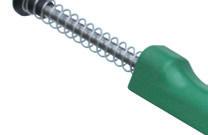



























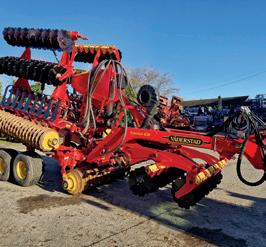


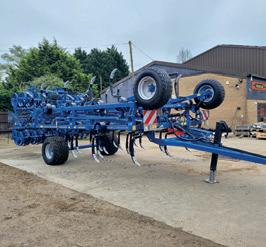
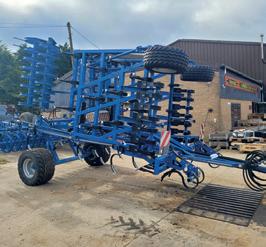
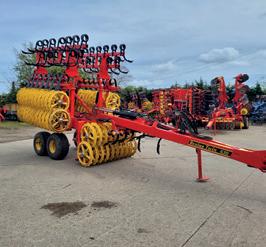
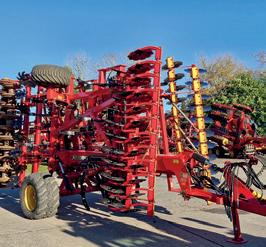

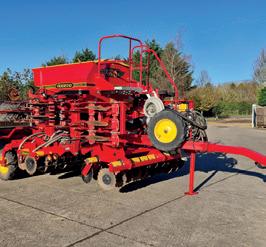
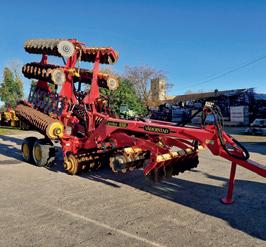

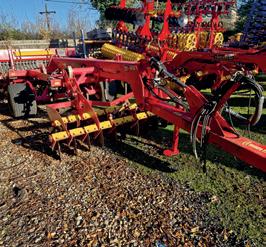
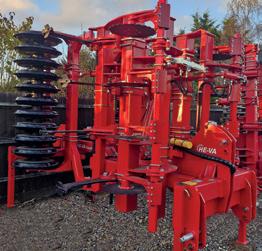
Atwice the national average.
The unprecedented achievement was achieved by the Happy Days Farm ing Company, which farms more than 2000ha (5000 acres) of arable crops across Lincolnshire and neighbour ing Nottinghamshire.
Farm manager Mark Popplewell at tributed the bumper crop to a combi nation of Merlin’s varietal strengths, optimal nutrition, an unusually wet spring – and beginners luck. “It quick ly became clear that we were looking at something exceptional.”
“The yield numbers on the display were so high we initially thought the equipment was faulty,” said Mr Popplewell. “The grain tank was filling much faster than expected, even compared to a strong wheat crop.”

Some 300ha of Merlin were drilled at a 135kg/ha on 30 March following a very wet winter. It was the first oat crop grown by Happy Days Farming. “We were virgin oat growers,” says Mr Popplewell.
The crop followed winter wheat in 2023 and oilseed rape in 2022. The seed was treated with Vibrance Duo, with the crop receiving two growth regula-
as farmers face increasing challenges from climate change and unpredictable weather. If we see advancements in varieties, we take them forward to official trials and if they perform well, we bring them to market.
“While the conditions this year were unique, the industry is having to contend with more unpredictable weather and demonstrates the need to continue investment in seed breeding to protect the future of farming.”
On the back of the Merlin’s high yield, Ms Clarke says Cope has applied for a
in resilient varieties, says Gemma Clarke
“We were virgin oat growers
riety is a consistent performer, so this is unlikely to be a one-off, she adds.
“The combination of an early harvest, making it suitable for all regions of the UK, high disease resistance and strong yield potential means it’s attractive to farmers nationwide,” says Ms Clarke.
“Merlin is accepted by all mills –and is one of only two spring varieties on spring oat contracts. It’s an early variety (-1), offers a competitive lodging score of 7, and has a high rating of 8 for mildew.
“It also has low screenings which is a real bonus to the mills and a good specific weight,” says Ms Clarke.
Anew broad-spectrum fungicide will be available to growers for use across a range of winter and spring sown cereals this season.
It follows regulatory approval for Plaxium – the first first three-way formulation fungicide from Bayer containing Iblon (isoflucypram). Mixed with fluopyram and prothioconazole, Plaxium offers broadspectrum activity in the convenience of a co-formulation.
Iblon is a proven and highly effective active substance that has shown dependable broad-spectrum activity against the principal foliar threats of cereal crops,” says Bayer fungicide market developer Greg Hanna. SDHI active isoflucypram, which is mar-
keted in Britain as Vimoy, was launched by Bayer autumn 2023. It is sold in a co-pack with the widely used azole prothioconazole (Proline). Plaxium is seen as a logical development following that launch.
“Following the testing 2024 season, Iblon, commercially available as Vimoy, has earned the trust of growers and advisers delivering reliable control of Septoria, yellow and brown rust among other disease threats.”
Mr Hanna says Plaxium builds on this trusted performance with the simplicity and convenience of an emulsifiable concentrate formulation containing fluopyram and prothioconazole.
Following approval by the Chemicals Regulation Directorate, Plaxium can be applied once per season to wheat, barley, oats, rye, triticale and spelt up to the start of flowering (growth stage 61) at a maximum rate of 1.5 litres/ha.
This means growers have the flexibility to apply at either the T1 or T2 timing depending on the seasonal disease pressure and other modes of action used in the programme, explains Mr Hanna.
“Iblon has shown itself to be an effective fungicide across multiple disease targets and application timings. In Plaxium, this flexibility has been retained meaning growers, and their agronomists can choose the timing that best meets their objectives.”



• Booms for lane widths 10 - 96 metres
• Hosereels from 150 - 750m pipe length
• Motorpump range; flow rates 30-150m3/hr

• Raindancer remote monitoring & control
• Fixtures, fittings, pipework and more... visit our website: briggsirrigation.co.uk call us on 01536 260338 or email: enquiries@briggsirrigation.co.uk












































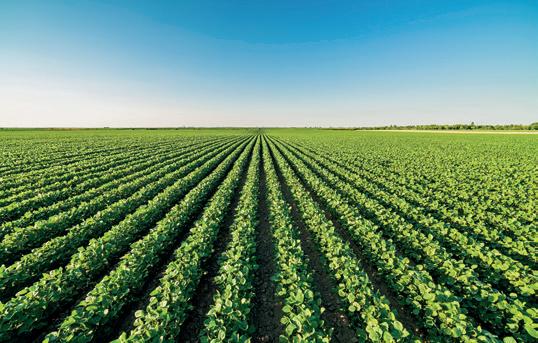














More arable farmers are turning to digital technology to help run their businesses –and generate better returns.
Almost two-thirds of larger growers believe data-driven decision-making is important to their farms, according to study findings unveiled at the Hutchinsons Connected Farming Technology Conference in Peterborough.
The survey covered 200 growers and farms with more than 100ha of arable crops only, or with mixed arable and livestock enterprises. Respondents were asked whether they were early adopters of technology, more results focused or just cautious.
“The research lends weight to the role digital technology is going to play in the future of UK farming,” said Hutchinsons head of marketing Nick Rainsley. On average, half of the farms researched said digital technology was increasingly important.
With an increasing array of tools and solutions being used, particularly weather-related apps, the research suggested 72% of farmers believe cli-
Benefits of technology
Auto-steer
Variable rate applications
Soil management
Carbon accounting
Staff management
[source: Hutchinsons]
mate change and weather considerations are the biggest challenges facing farming.
Even so, almost half of farmers surveyed said serious pressure was being imposed on their businesses by the additional challenges of high input costs, end market prices and overall farm profitability.
This was reflected in the principal reasons given for using digital tools. These were savings on costs, improvements to yield, and being more efficient – and hence more productive.
Some 76% of respondents said they were using auto-steer to boost productivity. Around 40% were adopting variable-rate technology for fertiliser applications and drilling. A smaller proportion, 21%, used variable-rate applications for spraying.

tegration between different software was also a barrier to usage.
Below Nick Rainsley: Data-driven


More than one third use digital technology for soil management, environmental and carbon accounting. Almost half said digital technology helped meet the challenge of compliance and more environmentally focused production.
In an encouraging sign, 77% rated themselves as five or above (out of 10) when it came to their confidence in using digital tech. Mr Rainsley said: “For such a large percentage to feel reasonably comfortable with the technology is very positive.






“While these technologies have been around for a while, we shouldn’t be surprised that their adoption is increasingly popular when the environment and also cost drivers are taken into consideration,” said Mr Rainsley.




When asked about barriers to adoption, cost and return on investment were clear issues. For larger farms, lack of in-







“However, we should be mindful that nearly one third felt they were insufficiently aware of what was available, and around 20% said lack of time, insufficient training, or lack of technical support were barriers.”





Early adopters were even more positive about digital technology. Staffing challenges were more relevant to the bigger farms. They rated work and resource planning as an important area that digital technology could help improve.





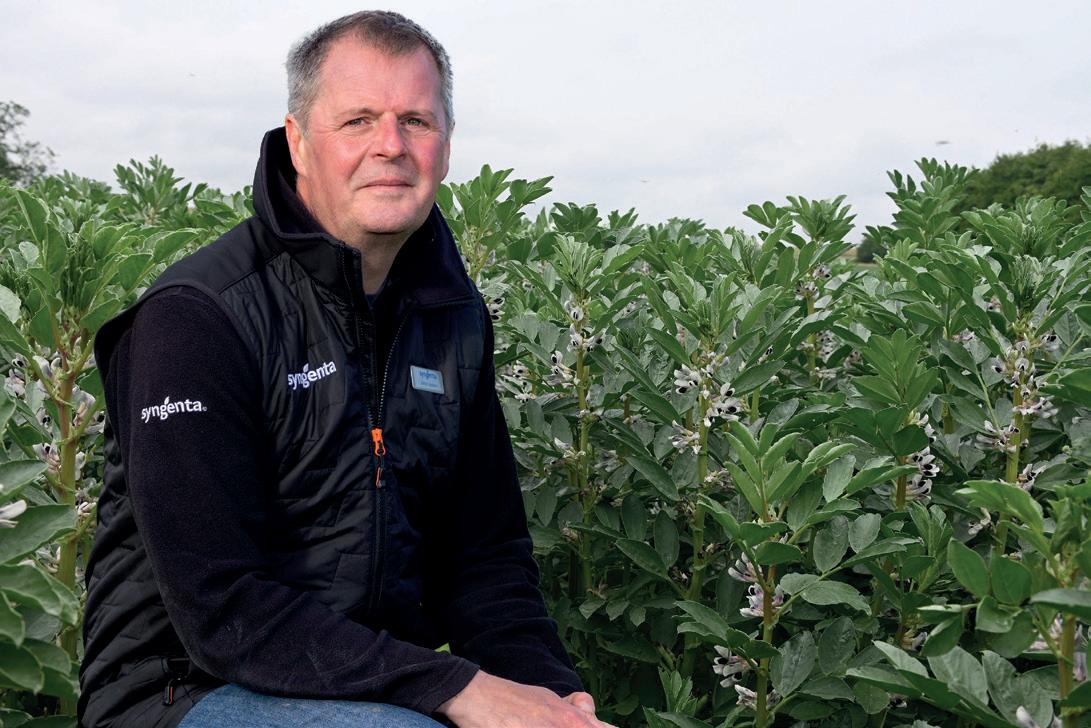
(pictured left) said conventional chemistry was in the pipeline. But he added: “Developments in biologicals are already offering an important bridge in crop agronomy and nutri-
Pulse growers and agronomists should take all the best elements of existing cultural controls – including variety choice, rotation and nutrition – and then add proven products and technologies to deliver more consistent yields
New biostimulant technologies offer potential to enhance pulse root crop growth right from the start and through the growing season, said

• Input-output ratio is key
• Invest on merit, not habit
• Know your crops and soils
Growers looking to optimise margins from cereals this season should invest in crops where the money will have most impact, say experts.
Lessons learned from a challenging harvest 2024 suggest that farms which hold back on inputs due to high fertiliser costs see lower quality and poorer returns – with fewer wheat growers hitting premium milling thresholds.
A difficult autumn in 2023 saw nitrogen reserves and other nutrients washed from the soil, further reducing crop quality and yield potential for harvest 2024, says the review by data analysts Yagro.
“For some, the response was simply to close the chequebooks and accept it was going to be a tough year. But farms which chose to invest strategically, even as conditions turned unpredictable, managed to make their crop meet milling standards.”
The review says investing in crops isn’t about throwing money at inputs; it’s about understanding where that money will work best. This requires intimate knowledge about varieties, soils and what they need to thrive under varying conditions.
“Farming has always required a high level of investment both in terms of initial investment, and seasonally – investing for eleven
months before gathering your return in one month,” it says.
At the same time, growers face the multiple requirements of navigating the weather, cashflow, interest rates and commodity markets. “Few other industries have such a challenge,” says the report.
Winter wheat continues to deliver the bulk of gross margin for most arable farmers. Yet many growers held back on nitrogen applications in 2024 – despite a fall in nitrogen prices from highs seen in the immediate aftermath of Russia’s invasion of Ukraine.
“Application rates have not returned to their pre-price hike level before 2021, despite reduced availability of residual nitrogen in soils,” explains the Yagro report, which says data suggests in many cases that not enough nitrogen was applied.
Few industries have such a challenge
“Volatility at input and output threatens to squeeze margins each year. But perhaps the biggest risk to growers is the increasingly regular extreme weather events we are experiencing, causing floods and severely hampering production.”
Even growing a staple crop like winter wheat isn’t without risk today, says the report. The weather made it a tough year to judge varieties. But, equally, it was an opportunity to judge how different varieties perform under difficult conditions.
Data
Reliably high-yielding variety Skyfall returned a relatively low cost per hectare to compete with other Group 1s on a cost per tonne basis. Its late sowing window makes the variety a highly versatile choice – reflected in its broad range in terms of yield.
A median crop of Skyfall achieved 9.47t/ ha in harvest 2024. Low yielding crops achieved just 6.05t/ha – although the top 25% of growers achieved more than 10.26t/ ha with the best achieving 11.36t/ha.
Delving into Group 4 varieties, LG Typhoon stands out for cost efficiency – particularly in its balance between cost per hectare and cost per tonne, leading the yields with around 9.8t/ha, but with very moderate input costs.
With a fertiliser cost some 17% lower than the next closest variety, LG Typhoon provides good yield efficiency, delivering higher output relative to each pound spent on inputs, says the Yagro report.
KWS Dawsum continues to gain in popularity, emerging as one of the most sought after Group 4 varieties due to its reliable yield potential and balanced cost profile.
In 2024, KWS Dawsum fungicide costs per hectare were approximately 5% lower than the average across comparable varieties such as LG Typhoon, DSV Champion, and Gleam, while its herbicide spend per hectare is on the higher end.
Despite having higher herbicide cost per hectare than SY lnsitor and LG Typhoon, KWS Dawsum costs per hectare are offset by a relatively high yield. This makes it an attractive option for growers who are focused on maximising output while controlling cost per tonne.
To download the complete Yagro Harvest 2024 review, visit www.yagro.com
• Rules for water under scrutiny
• Manure ‘mustn’t be excessive’
• Deadline for government reply
Autumn manure spreading could be under threat following an investigation into pollution guidance by the Office for Environmental Protection (OEP).
The government’s Farming Rules for Water (FRfW) aim to reduce and prevent water pollution by requiring farmers to plan manure and fertiliser applications so they don’t exceed soil and crop requirements.
Court case
Defra guidance in 2022 set out criteria that the Environment Agency should consider when assessing whether to take enforcement action.
But the Office for Environmental Protection believes the guidance may be inadequate
The government’s interpretation the rules has also been the subject of two complaints received by the OEP from the environmental charities WWF-UK and ClientEarth.
The OEP launched an investigation into the statutory guidance before Christmas. It followed a court case earlier in 2024 – and the outcome could have big implications.
OEP chief regulatory officer Helen Venn said: “The OEP believes that the statutory guidance may be unlawful as some of the wording is not consistent with the regulations themselves.
She added: “This guidance is likely to be relied upon by farmers and may therefore lead to breaches of the regulations when applying manure or fertiliser to the land.
The OEP investigation aims to
The Office for Environmental Protection wants to clarify the law
Below Steve Reed: deadline to respond







clarify whether Defra failed to comply with environmental law by issuing and continuing to make public the statutory guidance to its regulator on its enforcement of the Farming Rules for Water.



Alongside launching the investigation, the OEP issued an information notice setting out the details of these possible failures to Defra secretary Steve Reed. The OEP says it is waiting to see a formal response to the notice be-






fore deciding next steps.


“We are aware that a great deal of work is now underway to address concerns about water quality, including most notably the Water Commission recently announced by Defra,” it said.





“We hope that clarifying the law around this guidance will make an important contribution as part of that bigger picture.”




The potential failures by Defra relate to Regs 4 and 15 of the Reduction and Prevention of Agricultural Diffuse Pollution (England) Regulations 2018, known as the Farming Rules for Water.
Compliance
The statutory investigation is being carried out under section 33 of the Environment Act 2021. It will consider whether the government has failed to comply with the Farming Rules for Water.
An information notice describes the alleged failures to comply with environmental law – and
explains why the OEP believes this is serious and requests details relating to the allegations.
Defra secretary Steve Reed must respond in writing to the information notice by 13 January. The OEP says it will use this to understand the facts of the situation and inform future decisions
Public bodies, including the Secretary of State, have a statutory duty to cooperate with OEP and provide it with such reasonable assistance as it requests. An investigation may lead to enforcement action.
Reducing your energy bill by 50% is quite an eye-catching achievement, especially in an energy crisis (!), but in Herefordshire, it’s just part of the journey to self-sufficiency; including the handling of slurry as an asset, not a liability.
The core of the Davies family’s fifth-generation Hope Ash Farm business remains its 130-head dairy herd, but with beef, sheep, poultry, arable and 100kW of solar, there’s a very bold tick in the box of diversification as Harry, with input from Dad (Rob), and Grandad (Bryan) determinedly push forward with sustainable solutions.
“I never thought it would be simple,” said 23-year-old Harry, “but the benefits we’re seeing make all the effort very worth it.
With robotically-milked cows, an automated scraper system, and a standard slurry pump all ticking along nicely, one could be forgiven for sitting back and admiring the view; but for Harry, all those slurry nutrients just had to be captured for the long-term wellbeing of the farm.
From the underground slurry reception pit (approximately 120m3), the existing pump had no issues, but it wouldn’t have had enough pressure to send it more than 200m over the road to the farm’s new AD plant. So, the Davies family sought advice from their long-standing dealer, Midland Slurry Systems (MSS). Their recommendation was a long-shaft chopper pump from Landia, which they’d installed on numerous farms, as Giles Russell, Director at MSS, explains:


“This would be the furthest distance we’d asked a Landia pump to move slurry, but we were confident. In over 20 years, we’ve never had to take a Landia pump out of commission. They are fully repairable, but the pressure was well and truly on. This was our largest value job of the year, including getting all the pipework installed under the road and making sure that the installation was bob-on.”
The new 6” pipework successfully linked into the new AD plant, taking in slurry sent from the 15kW Landia long-shaft pump, which runs four times per day. From the AD plant, the processed slurry is then mixed in a 30m3 pit before being pumped up to the screw-press separator (also supplied by MSS, together with a control panel for all the equipment by the 290m3 AD plant). As the important nutrient-rich solids are collected in the bunker beneath, the separated liquid goes into a 10,000ltr above-ground tank, before being pumped via a 4” pipe back under the road to the main slurry store.
“Everything is joined up and working away, fully automated, from the moment it falls out of a cow,” continued Harry Davies.
“Another learning curve is the very fine line of managing the thickness of the slurry; especially when rainfall can affect the viscosity. On the one hand, we want to keep it as liquid as possible, but then the thicker the slurry, the greater the calorific value. The Landia long-shaft pump can run from just 100 seconds to up to 5,000 seconds (depending on slurry thickness), but at 15kW, with a 22kW AD plant, we obviously want to minimise the run-time.

Biogas is a learning curve. One size doesn’t fit all
He added: “Working with some suppliers in biogas is also a learning curve. Despite what some say, one size doesn’t fit all. A rigid approach does not work, whereas with MSS, they did what they said they were going to do, and did it when they said they would. If only all suppliers were like that!
Just before Christmas, we had a small, non-critical issue that I told Giles about. He said he’d be there between Christmas Day and New Year to sort it out! I said: “Giles, for goodness’ sake, I don’t want to be in the bloody slurry pit over Christmas, and I certainly don’t want you in there either, so, “Merry Christmas”, but now, please... go away!”
We’ve already come a long, long way with our AD plant, which we knew made total sense to include as part of our business. Looking ahead, we also need to learn how to best harness the heat from it.
Dealer backup is vital with this investment, and we have exactly that with MSS. There’s never any waiting time for spares, and since installation, the Landia pumps and mixers (five in total) just keep on working, with no issues whatsoever. Solid support and long-lasting, reliable equipment play a significant part in helping us create ‘a new known’ with real stability moving forward.”

Water company Severn Trent is reminding farmers to stay ahead of wet winter weather with a responsible approach to slurry management.
Inconsistent
“Even if you’re not in a designated nitrate vulnerable zone, spreading
vironmental damage,” explains Sev ern Trent farm adviser team manager Mark Biddulph.
“Rather than enriching soils and supporting crop growth, manure ap plied now is more likely to lose its val ue to the environment, resulting in soil damage and runoff,” adds Mr Biddul ph, pledging to work with farmers to


Wet weather throughout the year has already put pressures on farms’ storage. The Environment Agency says it is important to have enough storage and a robust back up plan in place.
The EA recommends having six months of storage to help comply with the Farming Rules for Water to spread only according to crop and soil need.
If you have any questions or concerns, please speak to your local EA Officer or call the EA National Customer Contact Centre hotline on 03708 506 506.
plied to match both crop and soil needs not only protects the environment, but it also means you’re making the best use of valuable homegrown inputs,” he says.
Mark Biddulph : ‘Vital we work together’
Farmers facing an urgent need to reduce slurry volume on-farm over winter, are advised to contact the Environment Agency.
German machinery maker Fliegl has announced the launch of its latest chain manure spreader – the KDS255 Muck Control.
This vehicle closes the gap between the large tandem spreaders and the more compact KDS140. Fliegl says it means the company now offers an ide al solution for farmers and contrac tors of all sizes.
The KDS255 has a permissible to tal weight of 18, 19 or 20 tonnes. The spreader has a stable tandem chassis to ensure safe and responsive driving characteristics when empty and fully loaded. It can optionally be equipped with a steering axle.
Spreading width
Thanks to its low design, filling with the front loader is easy and efficient. The conical body of the KDS255 has

Cardanically driven internal milling drums ensure consistent loosen-
and efficiency standards.
ing of the material and even distribution to the spreading discs.
The drop angle of the hydraulic tailgate can be mechanically adjusted to suit different working conditions.
The tailgate itself consists of a frame on which plastic panels are mounted. These are less susceptible to stone or rock damage and corrosive materials than a steel rear wall.
The robustness of the KDS255 is also evident in the scraper floor, which is equipped with V2 chain links and has a breaking load of 50 tonnes per chain strand. Scraper floor bars are continuous across the width of the body.
A stone guard is mounted on the front wall to protect the tractor unit. Fliegl says the machine is a versatile solution that meets the needs of modern farms – and sets new standards for performance and efficiency.

HAS THE BUDGET PROMPTED SUCCESSION PLANNING? DO YOU NEED A VALUATION?
At G&V Tait, we specialise in providing expert services to the pig farming community:

Valuations for pig equipment, pig farms, and pig-related businesses

Brokering, Sales & Auctions of used pig equipment

Landlord & Tenant Advice tailored to pig farming agreements
Whether you're buying, selling, or managing your pig farming assets, G&V Tait is here to provide the expert support you need. Contact us today to arrange a valuation or get advice on your pig farming business. Further details available on our website www.gandvtait.com or contact us on 07900 605349 or info@gandvtait.com
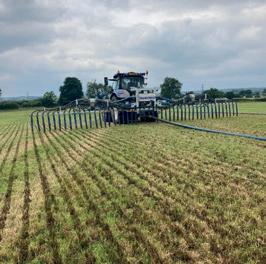



































Slurry spreading specialist Samson has introduced two new disc incorporators to get the best from organic fertilisers.
The CDf and CDx incorporators are designed to be used on different soil
3-12cm and a width of 4.5-6 metres –making it ideal for stubble and cover crops. It uses 510mm notched discs, arranged in staggered rows to ensure soil penetration.
The
to 6,000 litres/minute, making it efficient for large-scale applications.
The CDx is designed for heavier soils. It offers a working width of 8 metres and an adjustable depth of 3-12cm. Discs are mounted on double or triple arms, while T-profile rollers or bar rollers compact the soil, efficiently preparing the seedbed.
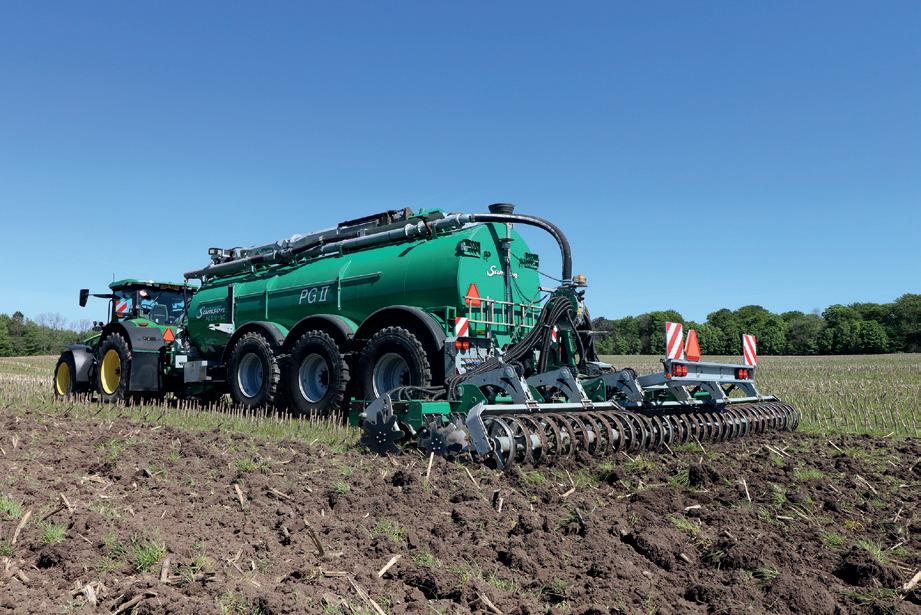
A20-tonne capacity rear discharge manure spreader is being launched by Hi-Spec Engineering.
The new Xcel 2050 machine is a larger version of the current Xcel 1250. The new 20-tonne model features Hi-Spec’s patented chain and disc spreading system contained within a full-width deflector.
Compared to vertical beater bar spreaders, the shredding action of the rotor-mounted chains and Hardox steel flails means the Xcel can handle a wider range of manures.
Solid objects – which could damage a vertical beater – can pass through the machine, which features an angled side panel design. This widens towards the rear for greater capacity, while reducing the risk of bridging.
Available as an option on the top of each side is a 4-inch square plastic trim to protect the panels when loading. Heavy duty marine grade chains move the contents to the rear of the
spreader with the flow rate controlled electronically. Having passed through the flail rotor, the broken up manure falls onto the two gearbox driven spreading discs. Both discs have shear bolt protection and are fitted with two spreading vanes.
The 2050 features HiSpec’s patented chain and disc spreading system
This robust model operates at speeds of up to 16km/h, with a slurry incorporation capacity of 70t/ha.
Foldable central discs facilitate transport while maintaining stability. Like the CDf, the CDx is equipped with a vertical distributor for precise slurry distribution and a side star disc for soil levelling, allowing immediate sowing after incorporation.
Incorporating organic fertilisers into the soil limits nutrient losses from volatilisation and leaching. As well as maximising nutrient uptake, this reduces ammonia emissions by up to 85%.
Samson says both incorporators combine high-performance fertiliser placement bekow the surface, optimising the use of organic fertilisers even near residential areas, while preparing the seedbed.
an even spread width of up to 24 metres.
The Xcel 2050 has a hydraulic drawbar and is fitted with a wide-angle PTO. To reduce compaction, it features a tandem steering axle fitted with 710/50 R26.5 tyres and air brakes.
The machine can be fitted with the ISOBUS compatible RDS Apollo spreader control system. Application rates are set and maintained using a colour touch screen terminal, which can store and export work records.
Weigh cells ensure the weight of manure in the spreader is constantly maintained. The speed of the heavy-
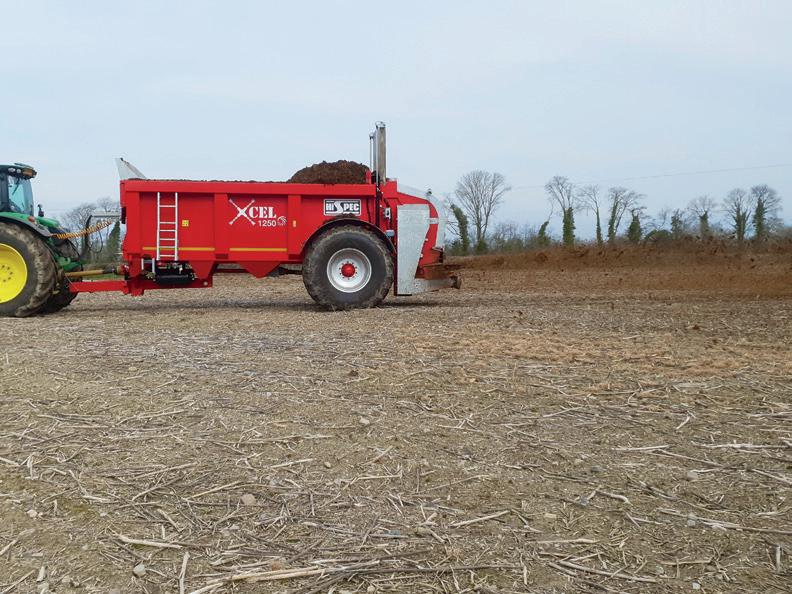
• Helps optimise egg production
• Data on flock health and welfare
• Good for birds and farm income
Acoustic sensors could help boost the health and welfare of laying hens – saving money and optimising egg production.
The project uses state-of-the-art sensors to monitor birds through novel sound technology and the analysis of egg quality data to provide flock health and welfare information..
Bird welfare
Researchers hope their findings will improve bird welfare while easing the financial pressures from soaring energy, feed and labour costs – as well as a range of environmental challenges and avian influenza.
Called Flockwise, the project brings together experts from FAI Farms, the Lakes Free Range Egg Company, Newcastle University and the UK Agri-Tech Centre. It has received grant funding from Innovate UK.
‘Significant gains’
Ultimately, the goal is to produce welfare friendly eggs that are nutritious, affordable and sustainable using artificial intelligence to provide community-based learning to farmers and the supply chain.
FAI Farms has secured significant gains in hen health and productivity by using a hen management system called BirdBox. The Flockwise project aims to build on this success.
Fiona Short, innovation lead at the UK Agri-Tech Centre, said: “Flock wise will work with farmers to en sure the technology is practical and effective, enhancing user experience while improving the sustainability of egg production.”
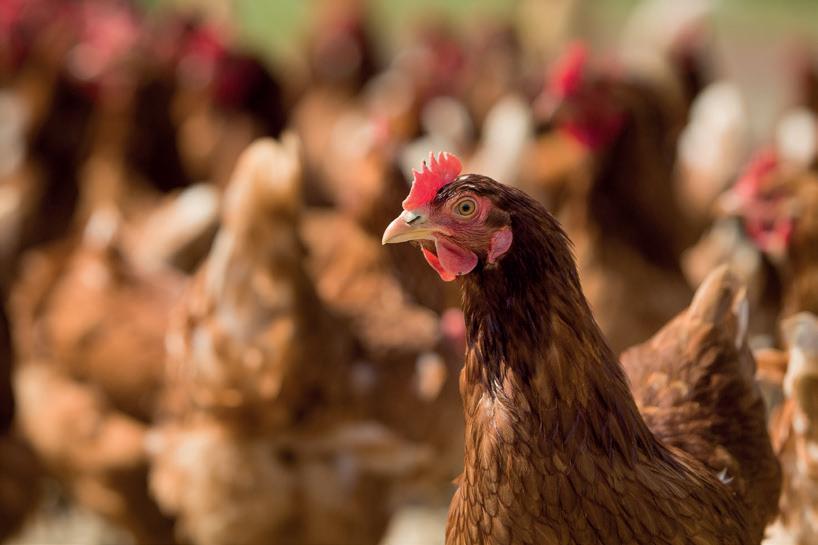
The BirdBox system combines data collection software with in-house sensor hardware, including an integrated bird weigher, light, humidity, air quality, temperature, feed bin weigh cells, water and power monitoring.
Environmental and production data is integrated to provide the information required to support daily flock management – and provide targeted guidance for farmers to intervene when issues arise.
FAI Farms project leader Carly Scott said: “With BirdBox, we already see the benefit of monitoring the environment and management of the flock.”
“This development enables farmers to better understand the health and welfare of their birds, not only detecting, but preventing problems while supporting increased productivity.”
Described as ground-breaking, the scientists say flockwise promises to benefit hen welfare and the longterm viability of the sector, while supporting net zero operations without

Novel sound technology can help to give farmers a better understanding of the health of flocks to boost egg production, says Carly Scott (below)
an industry-based learning tool to identify which interventions best reduce the welfare challenges on laying farms, support and upskill farmers to achieve higher health, welfare, and productivity in their flocks.
As well as measuring welfare, the system helps farmers to react quicker to challenges, make informed decisions on flock management and ensure regulatory compliance..
“We already see the benefit
Lakes Free Range Egg Company chief executive David Brass said: “This piece of leading-edge innovative research has the potential to change egg-producing poultry welfare and production beyond recognition and into a new exciting era.
Increased layer farm productivity means there is a potential for gains of £40,000-£110,000 per flock made through better hen health and flock extension. This would boost UK production by 1.7 billion eggs annually..
Better sustainability and a lower environmental impact means more birds are reared – increasing efficiency. This means lower labour and input costs for energy and feed. In turn, lower mortality reducing the carbon footprint

Farm business resilience is stronger, as hen health and welfare support economic productivity and resilience gains through higher welfare – and higher margin – egg products.
Professor Lucy Asher, of Newcastle University, said: “We we are proud to bring our expertise in automated animal welfare detection, social science, and explainable AI to the ground-breaking Flock-
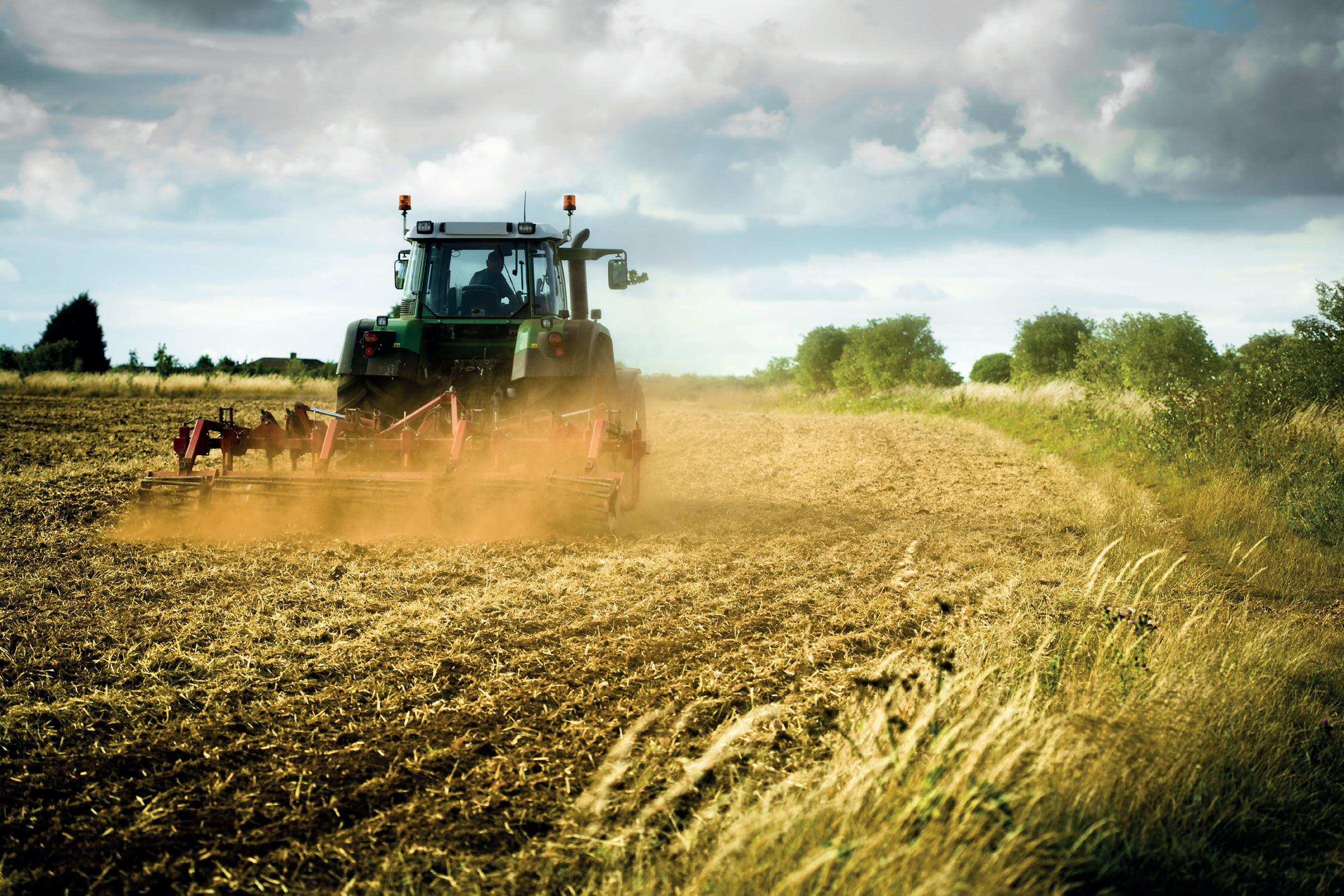
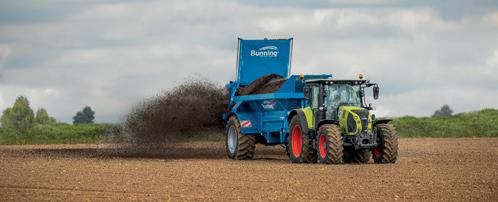


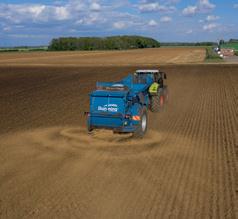






























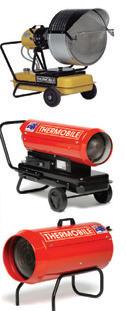



Pork exports to China have re ceived a boost after a big push by producers, government of ficials and the Agriculture and Horti culture Development Board.
Two more sites have received export approval after a delegation from the China Meat Association visited the UK last summer.
The visit included presentations to UK representatives at the AHDB Red Meat Export Conference in Butchers’ Hall, London.
Huge market
China remains the UK’s biggest ex port market for pork. The UK export ed £180m of pig meat to China in 2023 and shipped £117m of product in the first three quarters of 2024.



“The potential for our high-quality pork is immense and we look forward to continuing working with government and industry to maximise the opportunities. Going into 2025 this will be a welcome boost for the UK pork sector.”
AHDB chief executive Graham Wilkinson said the export agreement was a further demonstration of a collaborative approach to international trade development could deliver tangible results to pig producers.







AHDB senior market access manager Ouafa Doxon said: “The mission to keep the relisting of suspended sites on the agenda was realised through consistent and persistent efforts.
“The relisting of these sites demonstrates the resilience of the UK pork industry and the strength of relationships between AHDB and others. It is a compelling example of how critical market access work often unfolds behind the scenes.”




















































































some costs by targeting feed to multiple ewes in those last six weeks of pregnancy – and not overfeeding single bearing ewes.
Ewe lamb performance can vary hugely. Some people suggest empty rates of up to 20% are acceptable. But if they’re higher than usual for your farm, I’d recommend calling your vet for a chat.
Shearlings and older – biologically there is no reason why these are not in-lamb and therefore more than 2% or higher empty at scanning would be a red flag in my mind.
Iremember seeing a report, written in 1983, which said pregnancy scanning at 50p/ewe was unlikely to be economically viable for most commercial sheep flocks.
Fast forward to 2024 and 50p/ ewe would be tremendously good value. The price of pregnancy scanning today is much more commercially viable – and while prices vary, it’s still a useful exercise.
Scanning helps to plan housing, get your lambing staff lined up and prepare for dealing with triplets. It is also possible to recoup
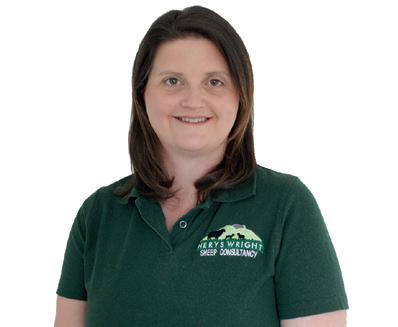
Ahead of lambing, there are unknowns. Will Schmallenberg return? Will bluetongue virus affect fertility? What impact will this wet weather have? We can try to explain the variability in scanning results but knowing and eliminating any of ‘nasty’ reasons could be money well spent.
There are many reasons behind why ewes are empty at scanning. Were they missed during mating? Are there any signs they were in-lamb but are no longer? Were tups working? Do empty ewes need testing for the presence of abortion?

Investigating any ewes that abort could provide useful intelligence, not only for your farm but to eliminate

most of any free or subsidised testing.
Nerys Wright is an independent sheep consultant. For more details, call 07891 187643 or visit sheepconsultancy.co.uk







Bale grazing suckler beef cattle in winter can produce a financial benefit of £1.58 per head per day – and generate other benefits too, says a report.
The Economics of Bale Grazing study is part of a wider Pasture for Life and Innovative Farmers project, to quantify the impacts of bale grazing on forage quality, quantity and soil health post-bale grazing.
“We asked the farmers taking part for details of their bale grazing sys tem, any key cost savings and wider non-financial benefits compared with housing,” says report author Emily Grant, of beef and sheep consultan cy Forrit.
“Cost savings come [largely] from mak ing hay rather than silage, not buying and bedding down with straw, reduced fuel and labour costs as farmers shift from using tractors to muck out to UTVs to go and move electric fences.”
Researchers found that setting out bales as soon as they are made signif icantly reduces handling and storage costs. Although not always easy, the alternative of leaving them in the field until later is more expensive.
“Our cost-benefit analysis on one of the farms showed a net financial bene fit when bale grazing of £1.58 per head per day, which is approximately half the housing cost. But there are disad vantages too.
“Potential downsides to consider include the fact that pasture is unavailable for grazing once shut up with bales.
“There is also the loss of phosphate and potash input from imported straw and that fixed costs of machinery and buildings are difficult to drop.”
The trial was co-ordinated by Aberdeenshire farmer Nikki Yoxall, who
Sam and Claire Beaumont roll out a hay bale on their farm
keeps a herd of native cattle. It looked in detail at seven beef farms across the UK that have adopted bale grazing.
“The benefits of bale grazing have barely been explored in the UK, so we are delighted that not only is it working well for our animals, it is also providing a business case for this practice to be adopted by the wider farming sector.”
Out-wintering is the best option for our cattle, said Ms Yoxall, but it could create all kinds of problems for the environment, she added.
“That can put a big strain on farmers. So far, bale grazing is having a wide range of positive effects across several farm and soil types – as well as saving us money and time.”

Early life calf pneumonia vaccine Bovilis Intranasal Live is now available in 20-dose vials from MSD Animal Health.
Administered to calves from day one, the vaccine reduces clinical signs of respiratory disease and viral shedding from infection with Bovine Respiratory Syncytial Virus (BRSV) and Parainfluenza-3 Virus (Pi3V).
The vaccine claims to deliver the fastest on-farm protection, with an onset of immunity after administration from the day of birth onwards of six days for BRSV (five days for calves vaccinated from the age of one week onwards) and seven days for Pi3V.
“We know that early-age protec tion of young calves through intrana sal vaccination can help prevent pneu monia and positively impact a beef or dairy calf’s productive future,” , says MSD Animal Health livestock veteri nary adviser Kat Baxter-Smith. The new 20-dose vials complement the single and five dose vials already available. Vets interested in further information about this early life calf pneumonia vaccine should contact their MSD account manager for de tails, says Dr Baxter-Smith.
Vaccinating a calf with vaccine Bovilis Intranasal Live
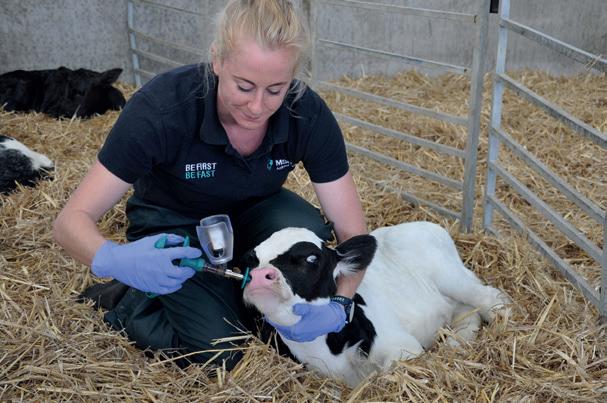
• Cases rise after wet autumn
• Keep on top of testing regime
• Take action where necessary
More cases of liver fluke are being reported following the wet autumn – with farmers reminded to keep a close eye on livestock.
The number of positive liver fluke cases is beginning to rise, in line with forecasts that livestock farmers in some areas could face a high challenge after a rainy and mild back end to 2024.
As cases increase, farmers should keep up with testing to avoid being caught out, say the industry groups for the Sustainable Control of Parasites in Sheep (SCOPS) and Control of Worms Sustainably (COWS).
More widespread
John Graham-Brown, of the National Animal Disease Information Service (NADIS) says unpredictable weather patterns mean it is likely that suitable snail habitats, and therefore liver fluke, will be more widespread.
This means a more prolonged window for infection than in previous dry summers, says Dr Graham-Brown. Farmers must stay on their guard and keep testing where appropriate, he explains.
Independent sheep consultant Lesley Stubbings says it is vital to estab-
Mild wet weather has posed a challenge for

lish whether fluke is present so treatment can be given at the right time. That also means using the right animal health product.
“We are particularly concerned about those farmers who have treated sheep already.”
“
Liver fluke is more widespread
Flukicides do not have any residual effect, which means a dose given too early offers no protection if sheep have been put back on infected pastures.
The coproantigen test can detect the presence of liver fluke a little earlier than faecal egg detection, says parasitologist Philip Skuce, of the Moredun Research Institute.
This is particularly useful when the risk is considered high, says Dr Skuce. But faecal egg count testing methods are likely to be most appropriate at this time of year after livestock have been housed for winter, he adds.
Biobest veterinary adviser Rebecca Mearns warns against the overuse of flukicides: “We are concerned about reports that sheep farmers are
repeatedly treating sheep with closantel against Haemonchus contortus –the barber’s pole worm.
“Dosing at intervals of less than six weeks risks adverse effects in sheep, including blindness. If farmers then use the same drug to treat liver fluke, the risks of overdosing are higher.
This risk is made worse because some producers have assumed they have resistance to triclabendazole, ruling out the use of this potentially useful flukicide on their farm. Talk to your vet to confirm the position rather than jumping to conclusions..
While less commonly affected by acute disease than sheep, the tendency to leave cattle out for longer if the weather is milder could mean longer exposure to fluke infection on pasture.
“Testing is essential to gauge the degree of exposure, with a number of testing options available at or over the winter housing period,” says livestock Lis King, of the Agriculture and Horticulture Development Board.
Better communication could encourage people to be more accepting of environmental innovation in agriculture, say scientists.
It comes after milk processor Arla announced it was trialling the feed additive Bovaer in a bid to reduce methane emissions in dairy cows. People responded by posting social media clips showing milk being poured down the sink.
The British Society of Animal Science said there was an urgent need to address the climate crisis. Feed additives such as
Bovaer were a promising step forward in reducing methane emissions from ruminant livestock, it added.
“The product has undergone rigorous risk assessments in multiple jurisdictions, evaluating its safety for animals, humans handling the product, consumers and the environment,” said BSAS.
For scientific innovations to succeed, societal trust was essential, it added. “Clear communication about safety and efficacy,
supported by peer reviewed science, can bridge the gap between scientific innovation and societal acceptance.”
Feed additives offered significant potential to enhance sustainability in livestock production, said BSAS. “Building consumer trust through transparency and engagement will be key to realising the benefits of such innovations.”
Arla said the furore – reported on national media – had no effect on milk sales.
The Bovaer trial is being conducted among 30 dairy farmers.
Changes in government policy are likely to impact the tenanted farm sector, with uncertainty typically leading to shorter-term lets, says a study.
The farm let sector remained stable in 2023, despite fears that owners would take land back in-hand for environmental uses, according to the 47th annual survey of let land in England and Wales by the Central Association of Agricultural Valuers (CAAV).
Stifling effect
“The overall let area has remained static since 2003, when CAP area payments were starting to come in, says the study. But it suggests that could change now payments have been delinked from land – and are being phased out entirely.
“The let land market has appeared to have settled at an unnatural equilibrium, due in part to the stifling effect of area-based entitlements and subsidies,” says CAAV secretary and adviser Jeremy Moody.
“Whether de-linking changes this is a matter for future surveys. In all parts of the UK, the tenanted sector will only grow if owners who do not want to farm themselves see letting land as an attractive option.”
Fresh lets in England and Wales were marginally outweighed by loss es, says the CAAV study. This meant a net loss of 1,532 acres of let land.
Some 68.6% of 1986 Agricultur al Holdings Act tenancies were re-let on Farm Business Tenancies averaging 7.26 years.

Uncertainty can typically lead to shorter-term lets, says the CAAV
Most lettings were of bare land –only 6.6% were fully equipped farms. Holdings with a house and buildings let for almost 10 years, while the overall average was 3.84 years.
But this includes everything from seasonal grass lets upwards, so where lettings of a year or less are excluded, the average term was 5.42 years.
New entrants obtained 20% of lettings where occupation changed. They tended to be longer tenancies – 35.6% over five years. Activity increased in
Fatal accidents on rural roads could be reduced following the launch of new guidance from safety campaigners.
Some 969 people died on rural roads in 2023, according to the latest Department for Transport (DfT) figures. The death toll is some 70% higher than on urban highways –despite there being fewer than half the number of collisions.
In a bid to reduce the accident rate, Rural insurer NFU Mutual has teamed up with the four UK farming unions to publish safety advice, warning that collisions on rural roads are currently four times more likely to result in a fatality.
The Code for Countryside Roads promotes the safe, considerate use of countryside highways. The 28-page online guide contains hints and tips on better driving techniques, the need to take time and respect for other road users.
Describing rural roads as the arteries of the countryside, Mr Turner said good transport links were vital to the rural economy and to tourism. It was extremely concerning that a vastly disproportionate number of lives were lost on rural roads, he added.
“Every road user has a responsibility to protect themselves and others, but the dis-
2023, though not to pre-2005 levels.
Mr Moody says the CAAV is actively looking at ways to remedy the stasis in land occupation. “Increasing the use and flexibility of our land occupation markets seems a critical reform for the success of agriculture,” he says.
“In that task, the Republic of Ireland’s Income Tax relief for letting farmland for more than five years is showing strong and continuing signs of success in attracting retiring farmers to let out their land. That merits serious attention in the UK.”
The full report can be downloaded from www.caav.org.uk.
parity in safety between urban and rural roads and the higher risk shouldered by vulnerable road users suggests more can be done.
One in every 32 collisions on rural highways during 2023 resulted in a death, compared to one in every 122 on urban roads, says Mr Turner.
“NFU Mutual has been campaigning for several years to improve rural road safety by raising awareness of the risks inherent to countryside roads, and we are proud to publish a code for countryside roads.”
The code has been based on feedback from over 700 members of the public. It is being supported by the Royal Society for the Prevention of Accidents (RoSPA) Farm Safety Foundation, British Horse Society and Older Drivers Forum.
To download the rural roads guidance, visit www.nfumutual.co.uk/ruralroads.
• Defra due to make announcement soon
• Existing agreements continue as usual
• Change affects existing applications
Along-awaited update on the future of Defra’s capital grant scheme is expected early this year, says the government.
It follows widespread anger and frustration after capital grants were quickly closed to new applications last November – plunging hundreds of agri-environment projects into doubt across the region.
Defra blamed the closure on exceptional demand for 76 capital grant items. In a statement, it said: “This is being done to prioritise funds for areas that will have the greatest benefit for food security and nature conservation.”
‘Real blow’
Unprecedented demand meant the department was forecast to spend 49% more on capital grants during 2024/25 than it spent last year and 125% more than in 2022/23, said a Defra spokesperson.
“Some of the capital grants offer for farmers will temporarily close to new applications. Agreements that have already been signed will be met, with further funding prioritised to help build a sustainable farming sector.”
NFU deputy president David Exwood described the sudden closure of so many capital grants as a real blow
to farmers – many of whom were relying on the funding to achieve their environmental ambitions. “The messaging of this is confusing,” he said.
“Farmers and growers are being asked to adopt measures to improve the environment but have been left in the lurch without access to the key grant schemes which will enable them to do this.”

“With applications timed to fit in with the farming calendar – and no confirmation that existing applications would progress – it was incredibly frustrating and unhelpful that members would receive no further information until after the New Year.
“The whole agricultural transition has lurched from one crisis to another,” said Mr Exwood. He added: “This is only the latest scenario where Defra has failed to provide clarity and certainty.”
Following the autumn Budget, farmers were already facing the accelerated phaseout of direct payments. “This sudden decision has once again left farmers wondering how on earth they can plan for the future with these ever-moving goalposts. We are holding urgent meetings with the government to try and get some muchneeded clarity for members.”
Defra is pointing farmers in the direction of grant schemes that are still open – although most are remain closed. That said, farmers can still apply for the following grants:
• Woodland Tree Health grants, which help protect tree health against devastating plant pests and diseases.
• Capital grant plans and management plans are important to help support the development of new Countryside Stewardship Higher Tier agreements.
• Protection and Infrastructure grants and Higher Tier capital grants, help support delivery of high value environmental benefits, such as re-wetting peat.
Defra reports unprecendented demand for capital grants
Below David Exwood: One crisis to another
Applications which relate to the capital grant elements that are temporarily withdrawn, it will be on hold for now. “You will be contacted in early 2025 with information about what happens next,” says Defra.
“If your application is for one of the grants that are still open, it is being processed. You should expect to receive an offer, provided there are no issues with your application.
“Payments under existing agreements will continue as usual following the current process. The change only impacts new applications.”ue as usual following the current process. The change only impacts new applications.”
Betrayal of trust’ punishes farmers
Closure of the capital grant scheme has sparked a widespread backlash among farmers – and increasing exasperation.

National Sheep Association chief executive Phil Stocker says: “We have worked tirelessly and proactively to help test scheme design and to feedback on members' experiences. But what we are seeing now is a betrayal of trust and confidence.”
Many farmers who had wholeheartedly thrown themselves into the pilot for the Sustainable Farming Incentive now faced uncertainty. On top of that, the speed of the Basic Payment Scheme reductions far exceeded expectations.
The closure of capital grants come after overwhelming demand for some capital grant items, with the main capital grant offer temporarily closed to new applications and denying access to a total of 76 grant items.
Farmers were being punished for their enthusiasm to become more sustainable, added Mr Stocker. “Defra and Government are again showing a lack of understanding that farming businesses have to budget years in advance.”
Many farmers cannot afford to carry out these environmental works without funding and, while we may be seeing record sheep prices, these are struggling to cover the inflationary pressures within business enterprises.

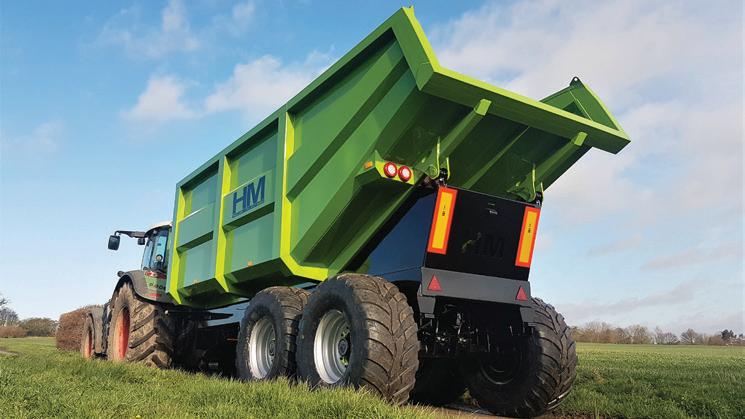
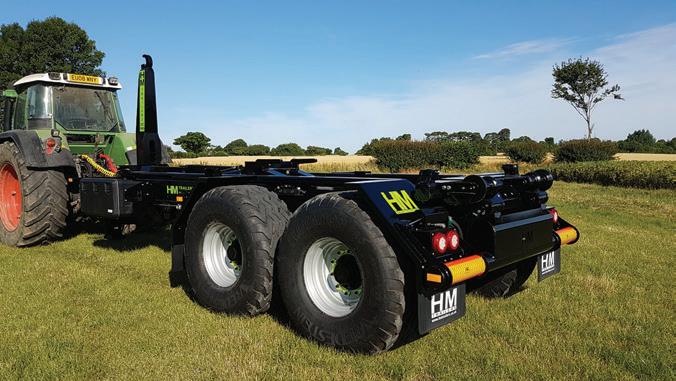


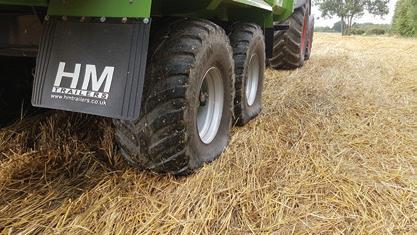

Public support for farmers remains high following the autumn Budget. Let’s keep it that way, says Clodhopper
When times are tough, farmers stand together. And that is exactly what we did after the autumn Budget delivered a devastating blow to our livelihoods.
The government decision to impose a 20% inheritance tax on farming assets worth more than £1m is a shameful betrayal of promises made by Keir Starmer as he sought our votes so he could become Prime Minister.
The peaceful protests which brought thousands of farmers and hundreds of tractors to the streets of London are to be applaud-
People are fickle – just like politicians

ed. After all, if we don’t stand up for what is right for farming, who will?
Yet the government remains determined to push through the inheritance tax changes – and other Budget measures that will hit farming hard. These include increasing the tax on pick-up trucks and the faster phaseout of the basic payment.
I oppose these Budget measures as much as the next farmer. But I find myself asking: why were so many of us surprised that a Labour government launched a tax raid on farming families in the first place?
It never pays to take a politician’s promises at face value – especially when it comes to money. And the Labour Party has never been a fan of inherited wealth. And nor does it particularly like farmers.
It is clear we must do more to get the farming message across. But there is a fine line between staging properly policed protests on the streets of London and blockading Britain’s ports and motorways.
The London protests were a show of strength and unity. And a large percentage of the public is on our side. But people – like politicians – are fickle. And we must remem-
ber that public support can be lost much more easily than it can be gained.
Many people simply don’t believe farmers are cash poor. All they see are fields, countryside, landed gentry and wealthy estates. It’s an outdated view. And most are unaware that farming typically generates less than 1% return on investment.
Neither do they understand that many of us are tenant farmers – we don’t even own the land we farm. A 20% inheritance tax for us is simply unaffordable.
It’s a bitter pill to swallow – especially for older farmers expecting to pass on the family farm to the next generation tax free, only to be told that the rules have changed and they now face a huge tax bill.
Yes, the Budget could force some farming families to bring forward a succession plan sooner – and that could indeed benefit the younger generation. But that doesn’t help farming families unable to meet inheritance tax gifting rules.
Little wonder many farmers are now asking whether there is any point in investing in their business. Instead, they are turning to off-farm investments because food production profits are so thin.


It’s not a rosy picture at all – especially for families who have eked a living from the land they love for generations. But let’s try to keep the public on side – rather than taking action that will turn them against us.
















